It had been four decades ago, yes, 40 years ago that we had got together as direct-recruit officers in United India Insurance Company. Our lives had taken different paths, some remained in the company, some moved out, worked, retired, yet kept in touch. It was decided that we would have a get-together at Jaipur, since one of our batchmates was settled there and he agreed to host us. Finally, only seven of us could make it. Time was short, so it was decided to make the most of the one and half days at our disposal in Jaipur. Of course, a lot of gossip, leg-pulling, old-time memories, future concerns, etc. would be prominent, but some bit of sight-seeing would also be thrown in. It was a cool January mid-morning, when three of us from Mumbai got down at Jaipur to catch up with our host and await the rest of the gang.
Checked into the Uniara Grand Heritage Hotel, we chatted away to glory, even as we admired the sprawling courtyards of this hotel, where several photoshoots were happening. Our rooms were a nice blend of old-fashion and modern amenities.
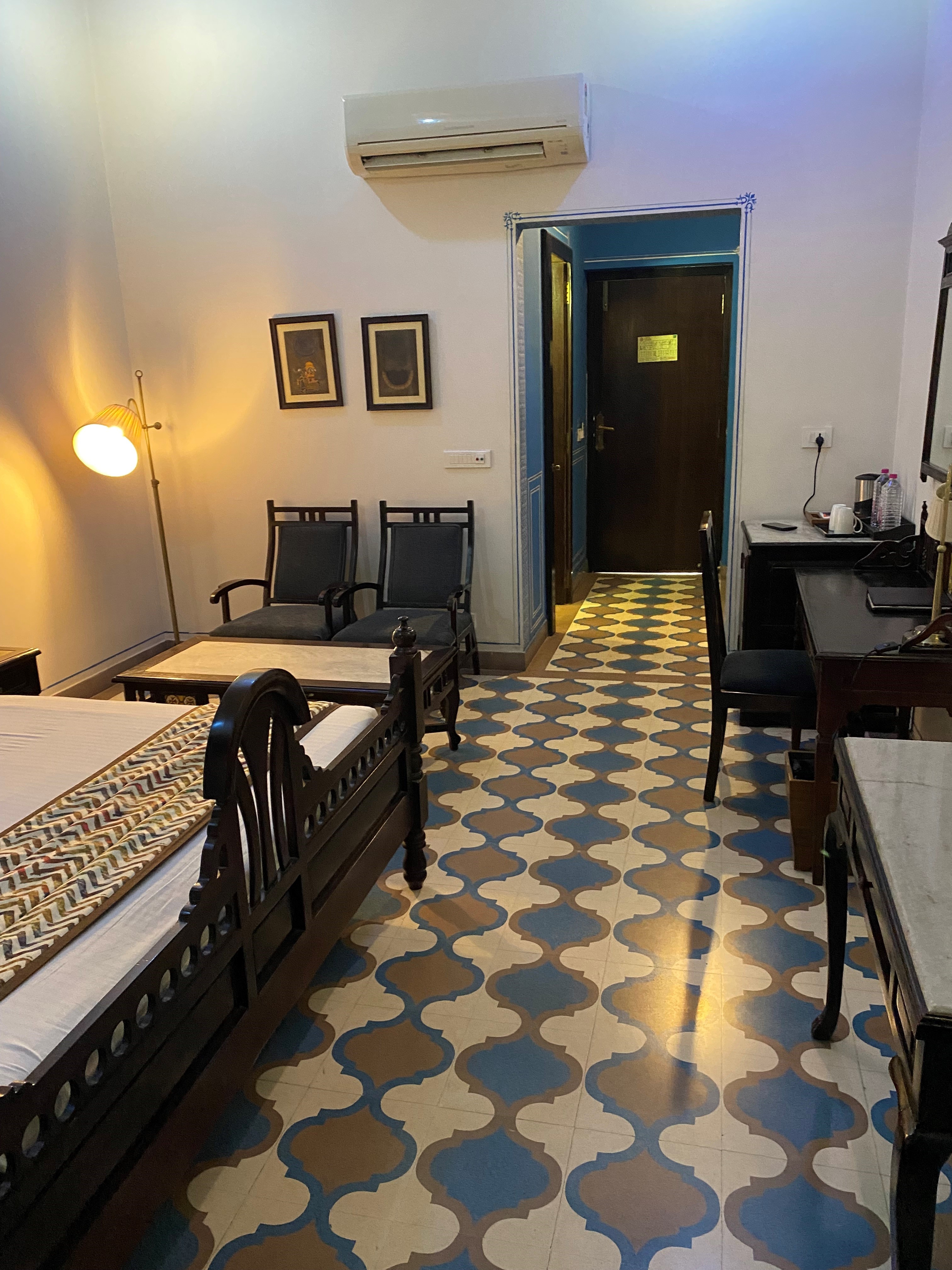
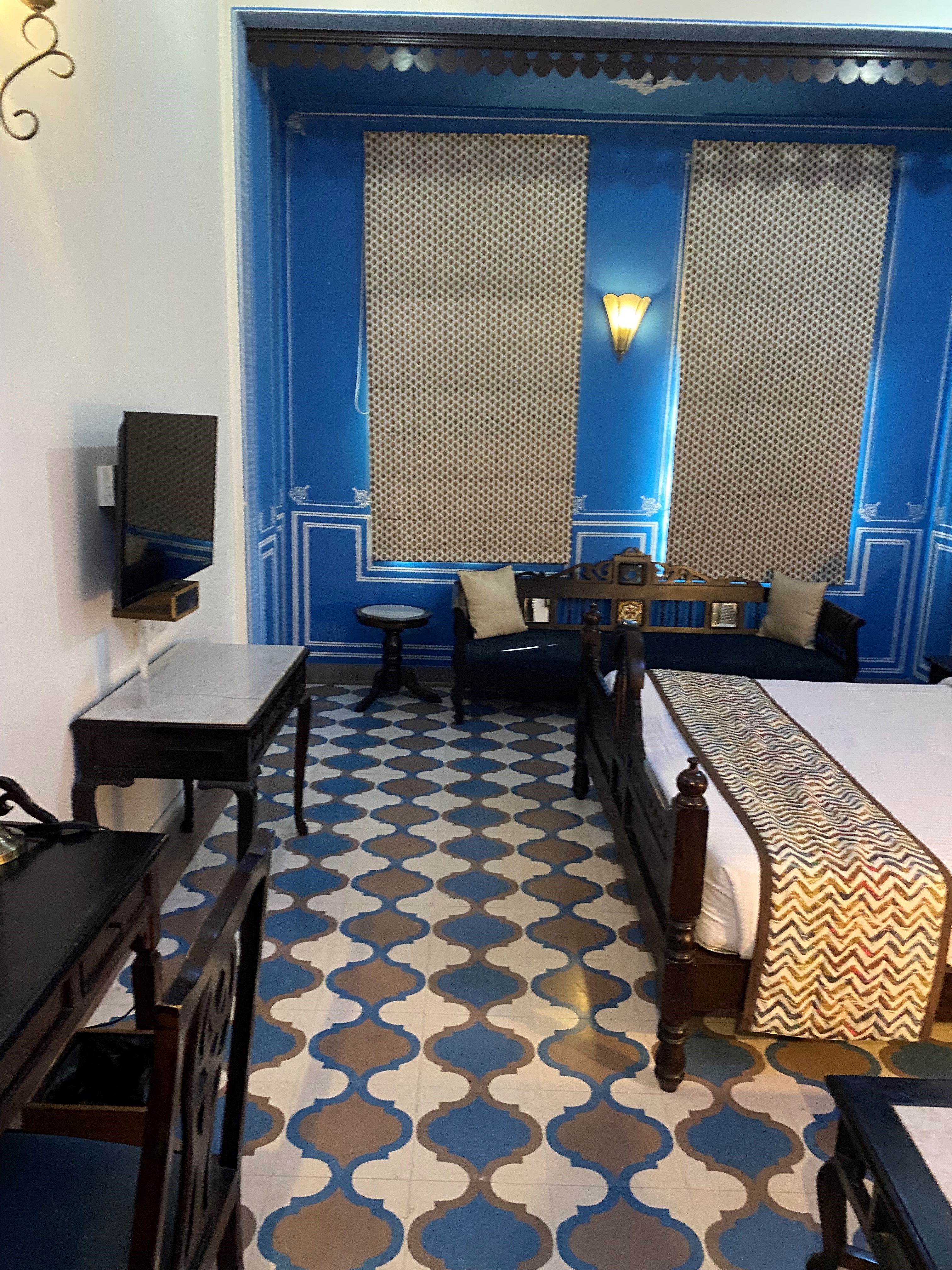
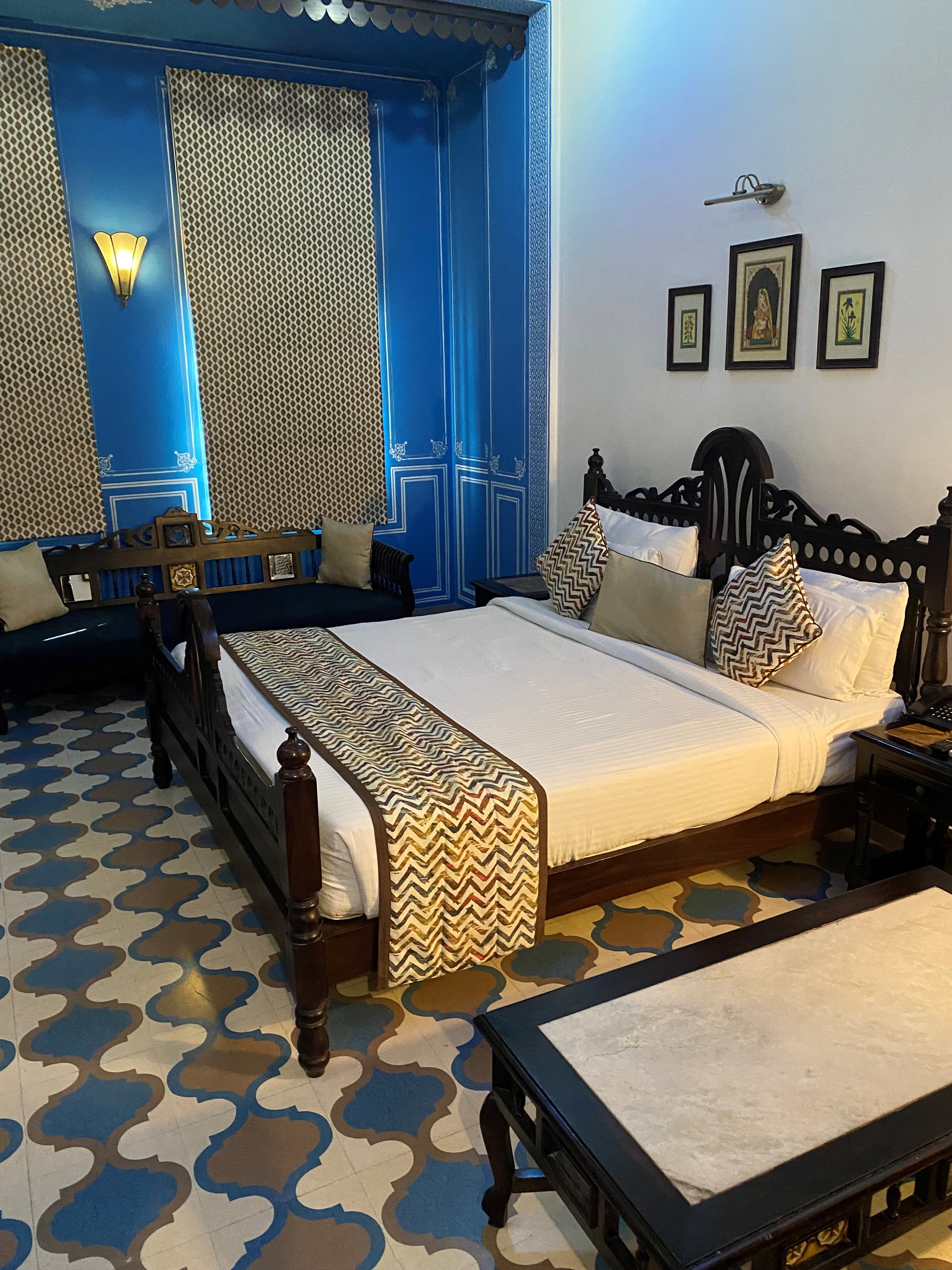
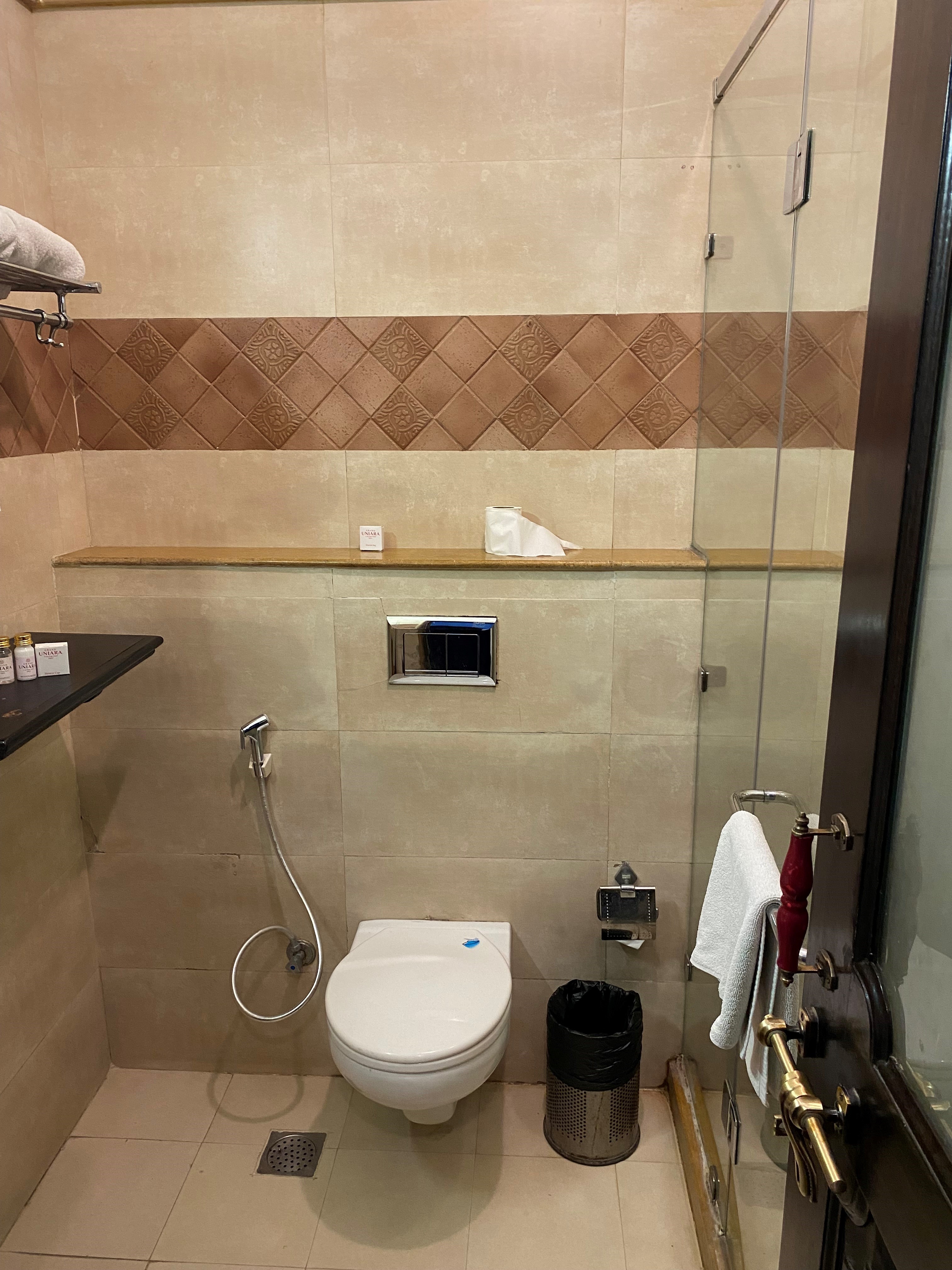
Others came in too and lunch done, we charted out the plan of action for the rest of the day. Sight-seeing within the city before returning to the hotel for our evening get-together. The following day, we would do Amer Fort and go on a leopard safari. Our first port of halt was the Jantar Mantar.
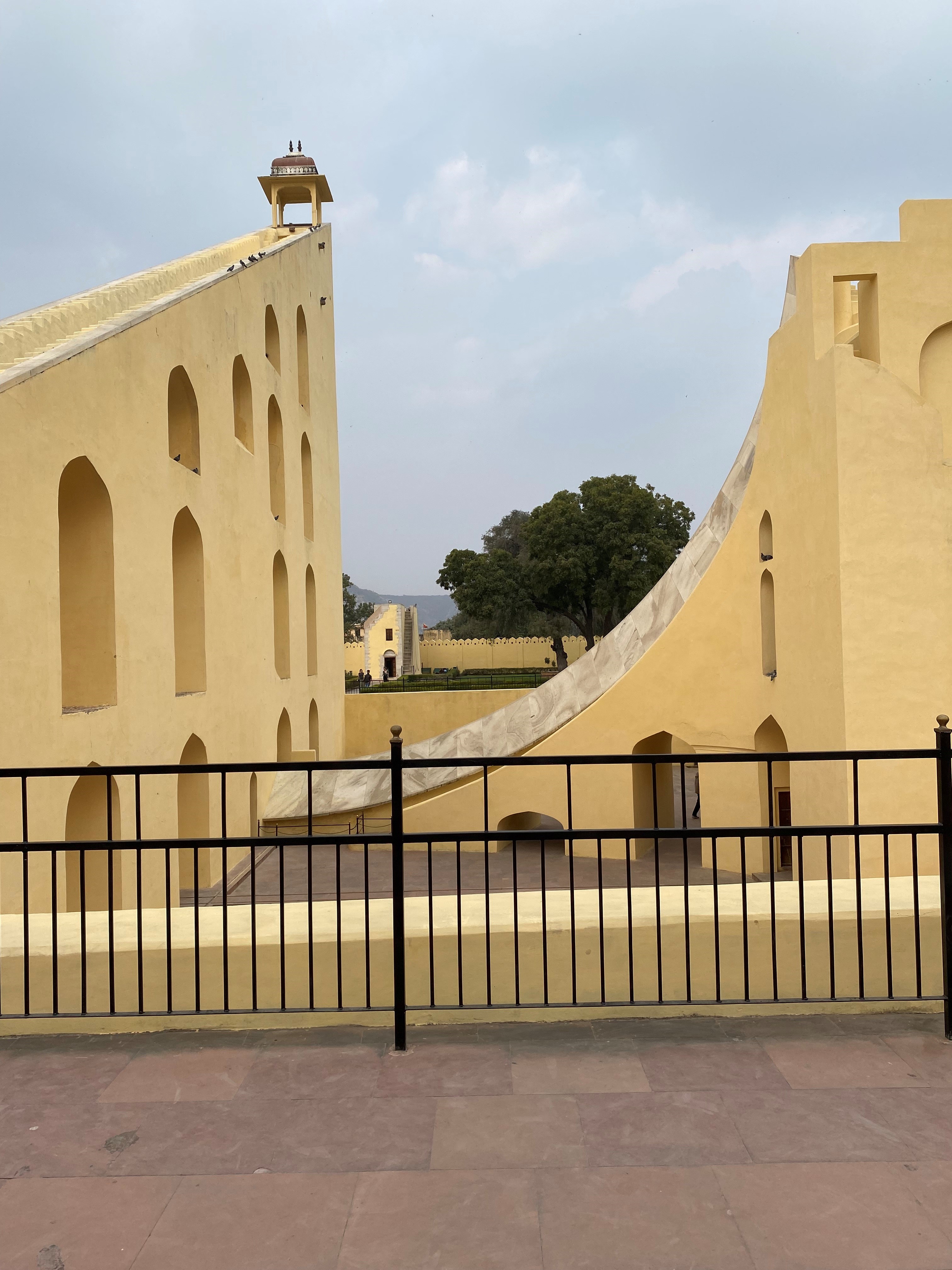
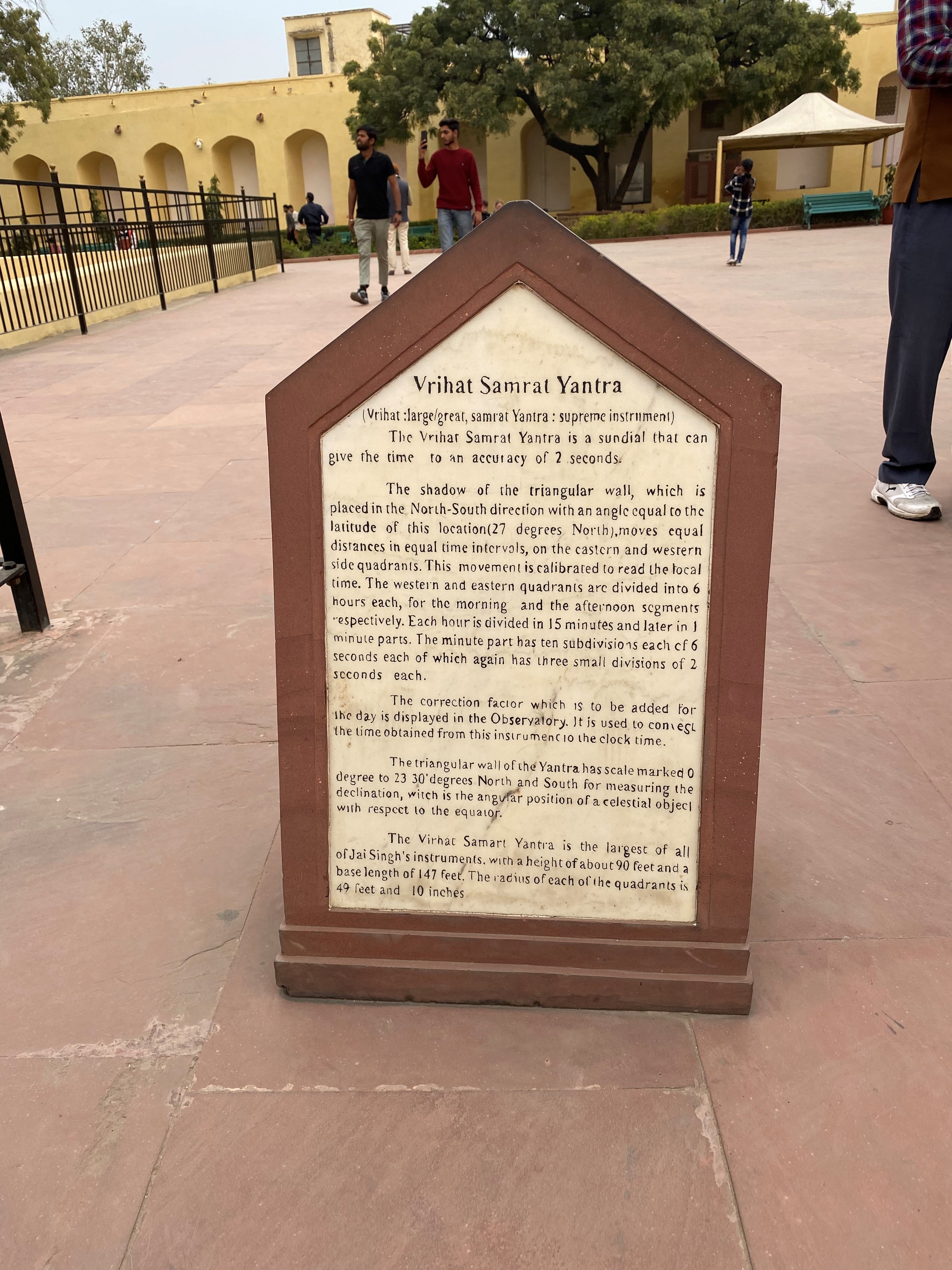
The term ‘Jantar Mantar’ emanates from the Sanskrit words ‘Yantra’, meaning ‘instrument’ and ‘mantrana’, meaning ‘to calculate’. In short — a calculating instrument. The Jantar Mantar actually comprises of 19 such instruments made of stone and marble, with numerous markings and astronomical scales in them. Sun dials, instruments that indicate the positions of celestial objects across seasons, co-ordinates of stars and planets, direction markers, etc. We were in a daze over what the guide explained to us as we wondered at the exceptional astronomical and construction skills of the ancient Bharatwasis.
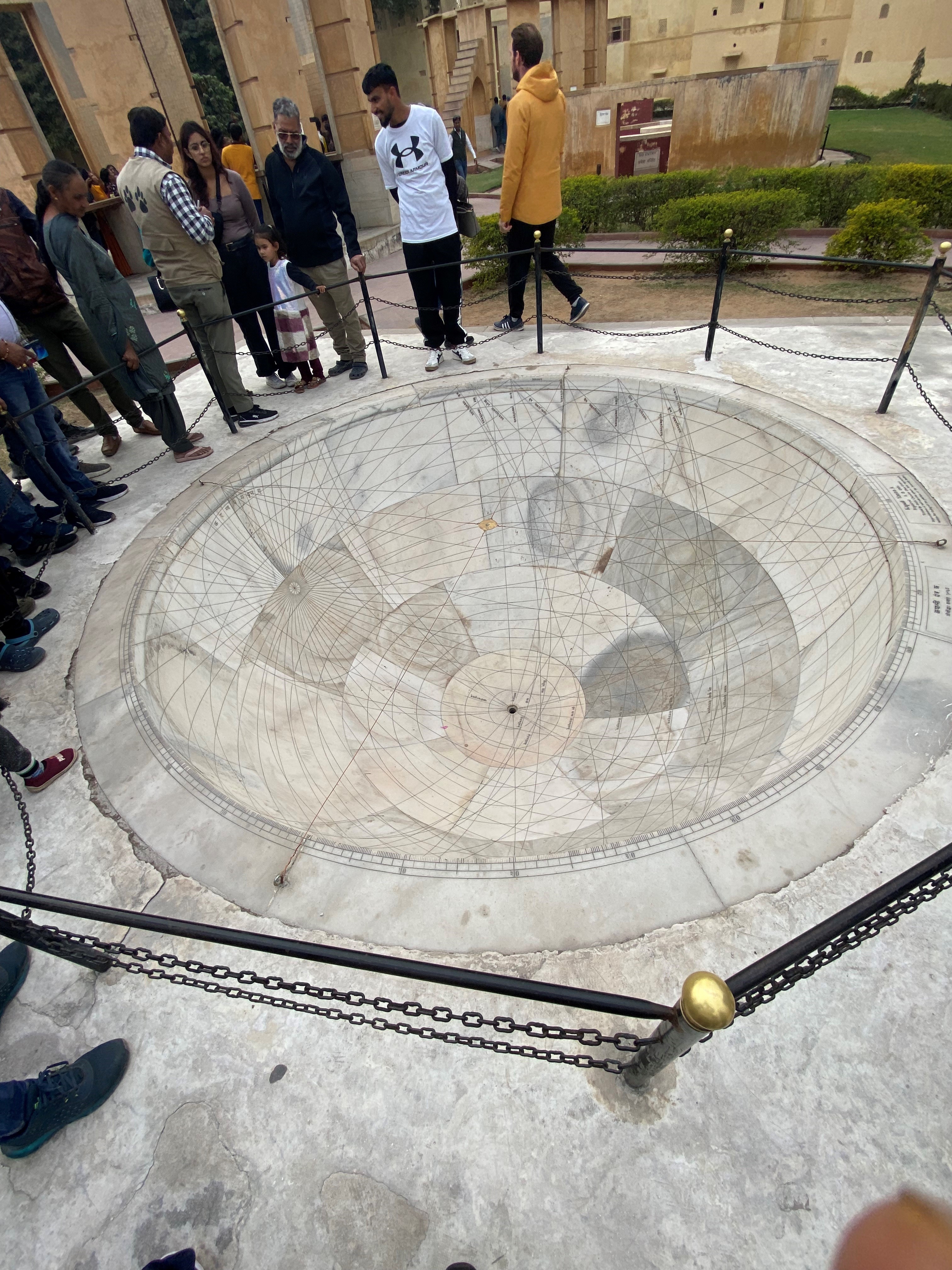
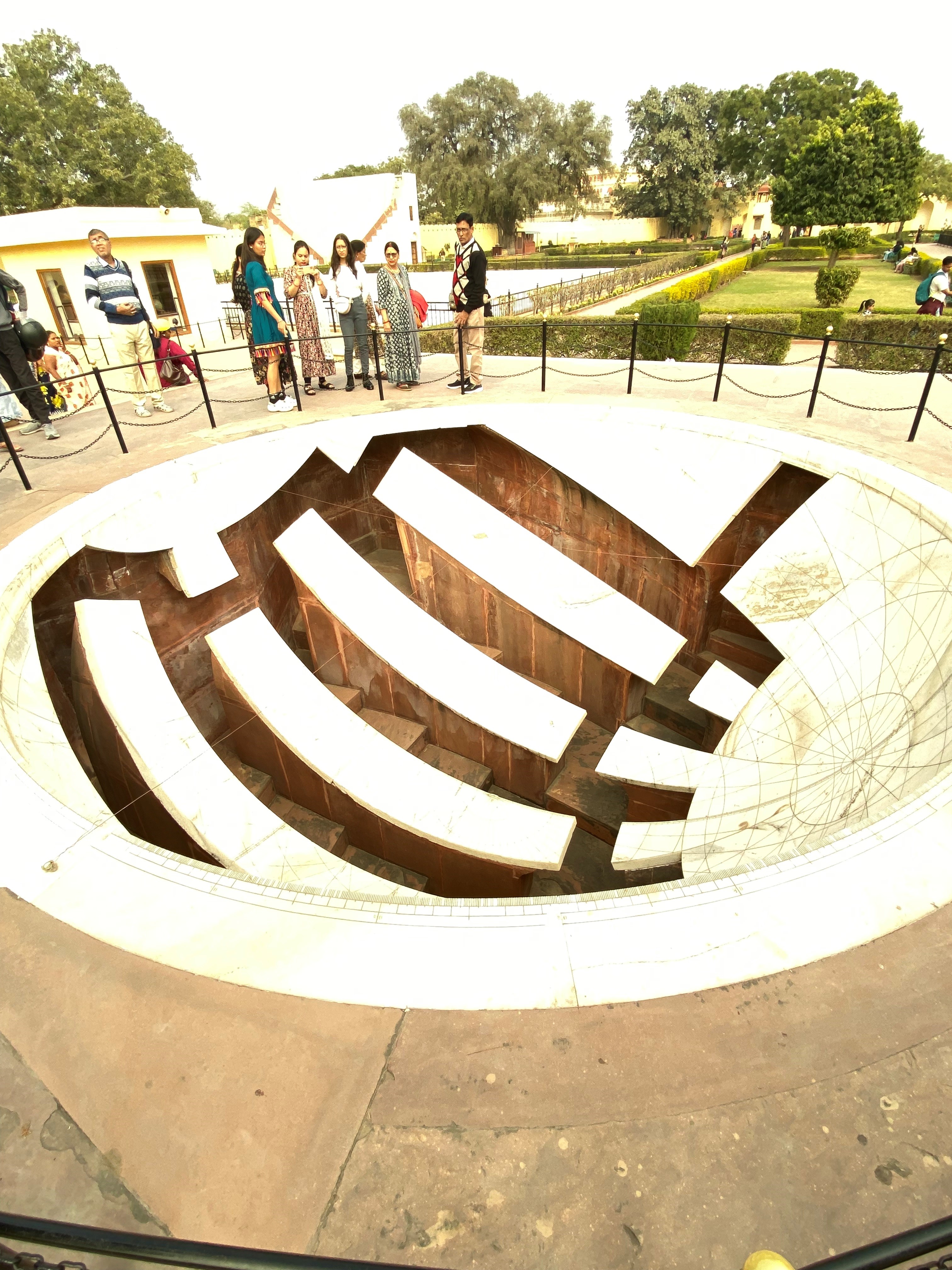
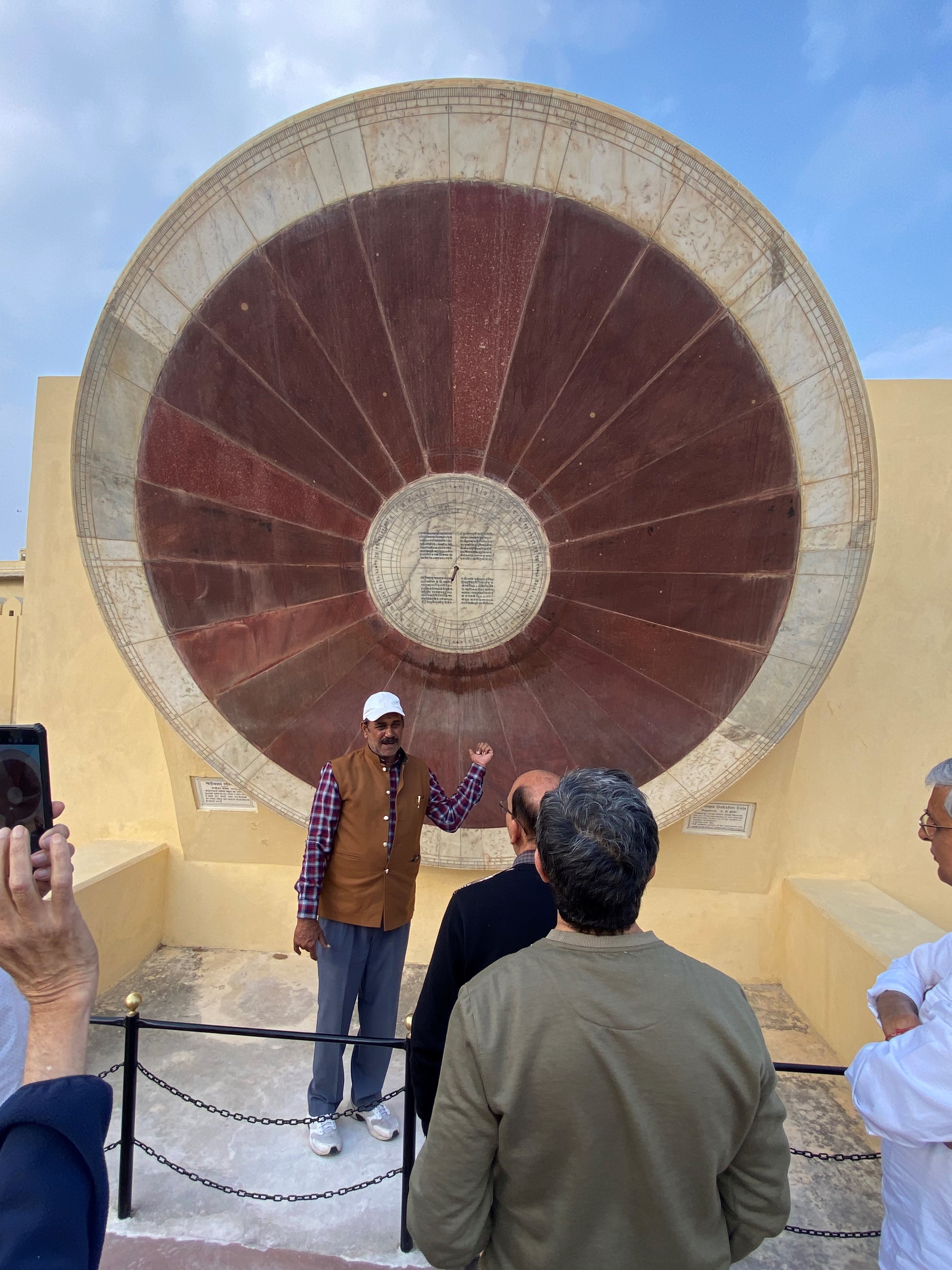
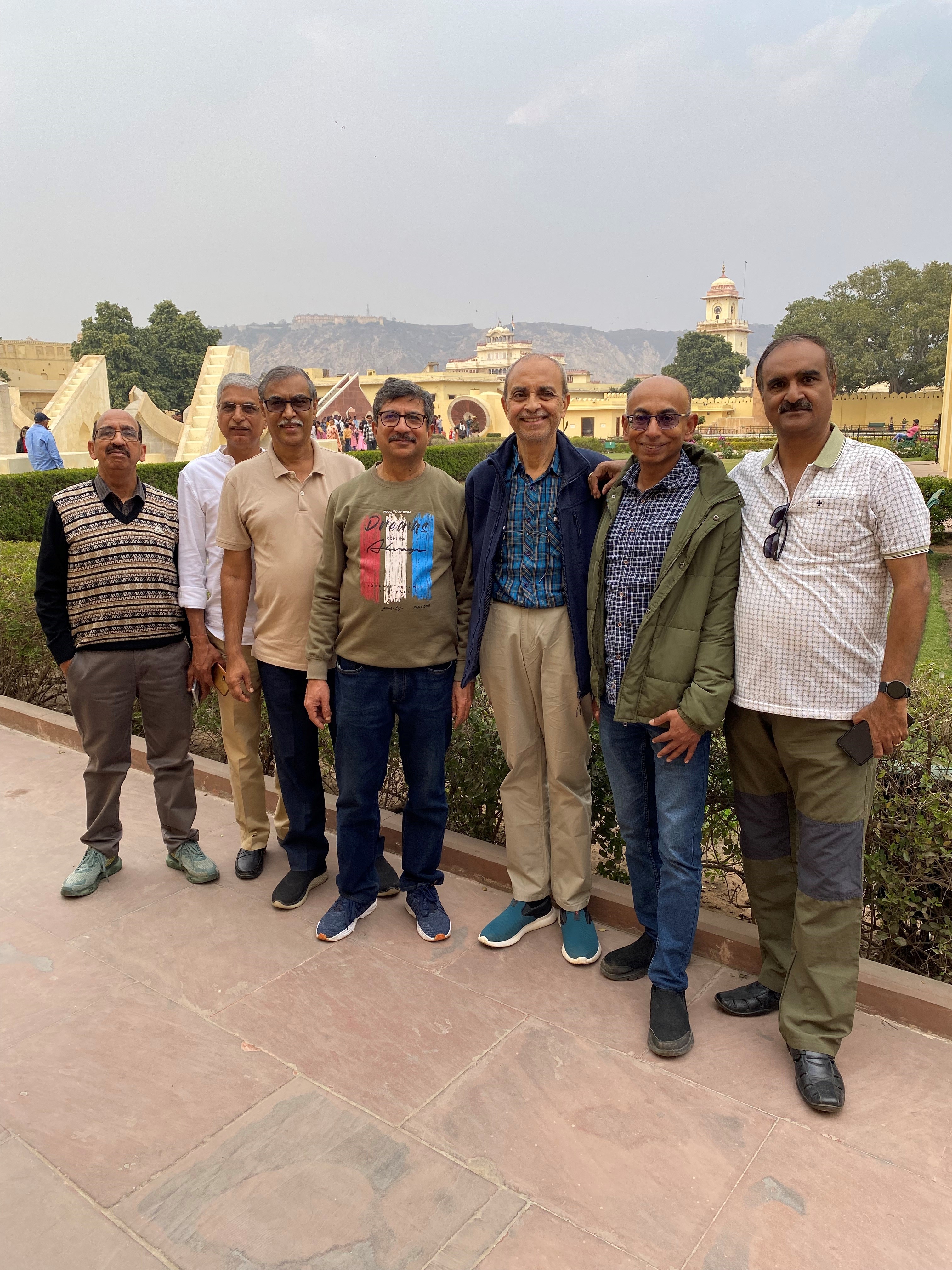
This is a UNESCO World Heritage Site. Built by Raja Jai Singh, who was dissatisfied with the then existing astronomical tables, the construction of this observatory took years and concluded around 1738. Definitely a place worth-seeing and feeling proud at the skills of our ancient countrymen.
We were now at the City Palace, that is close by. Built by Sawai Jai Singh II, after 1727, when he moved his capital from Amber and created the planned city of Jaipur, now, it houses some government offices and museums. The Jaipur royal family still resides here, and those portions are, obviously not open to the public.
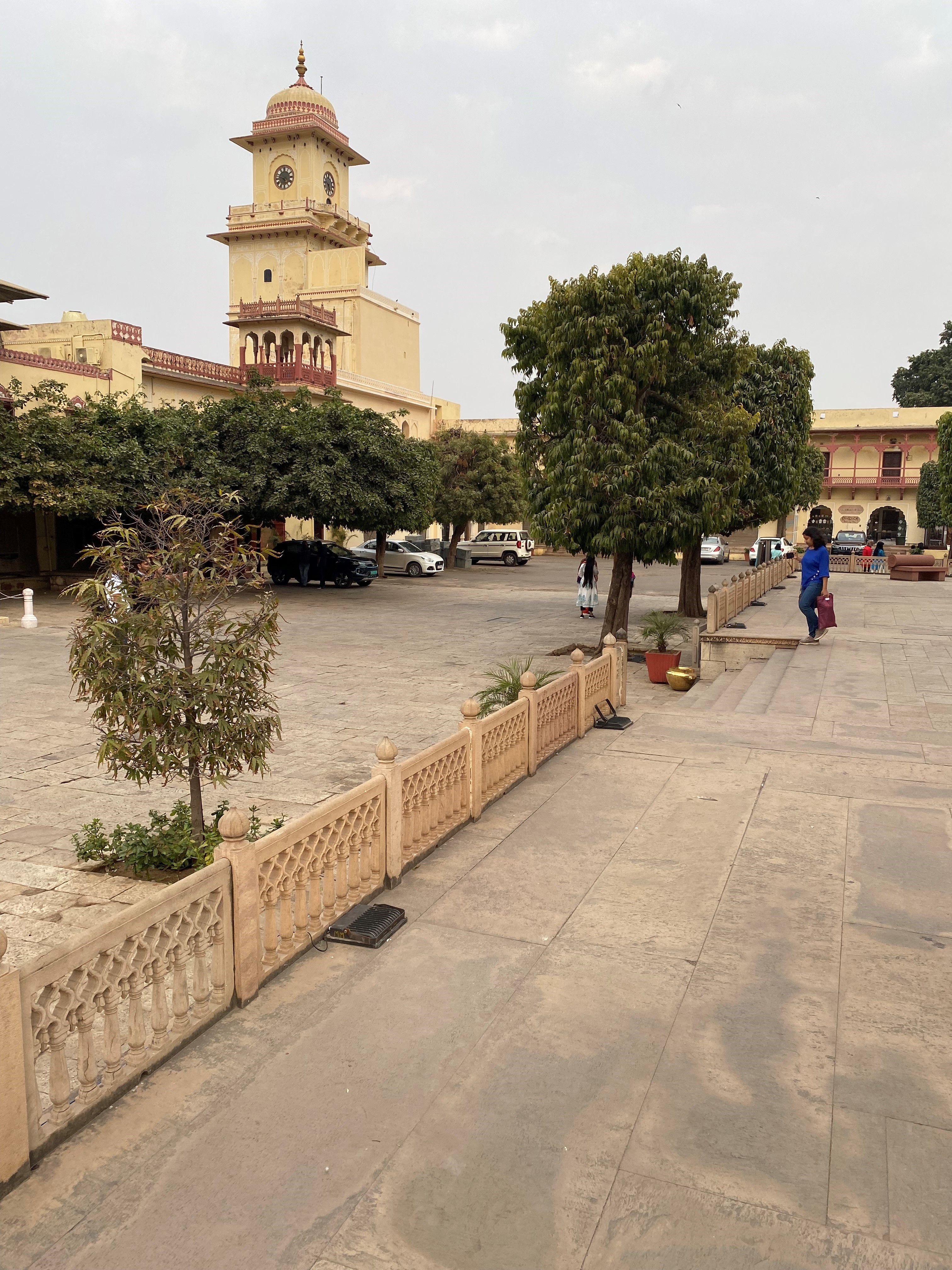
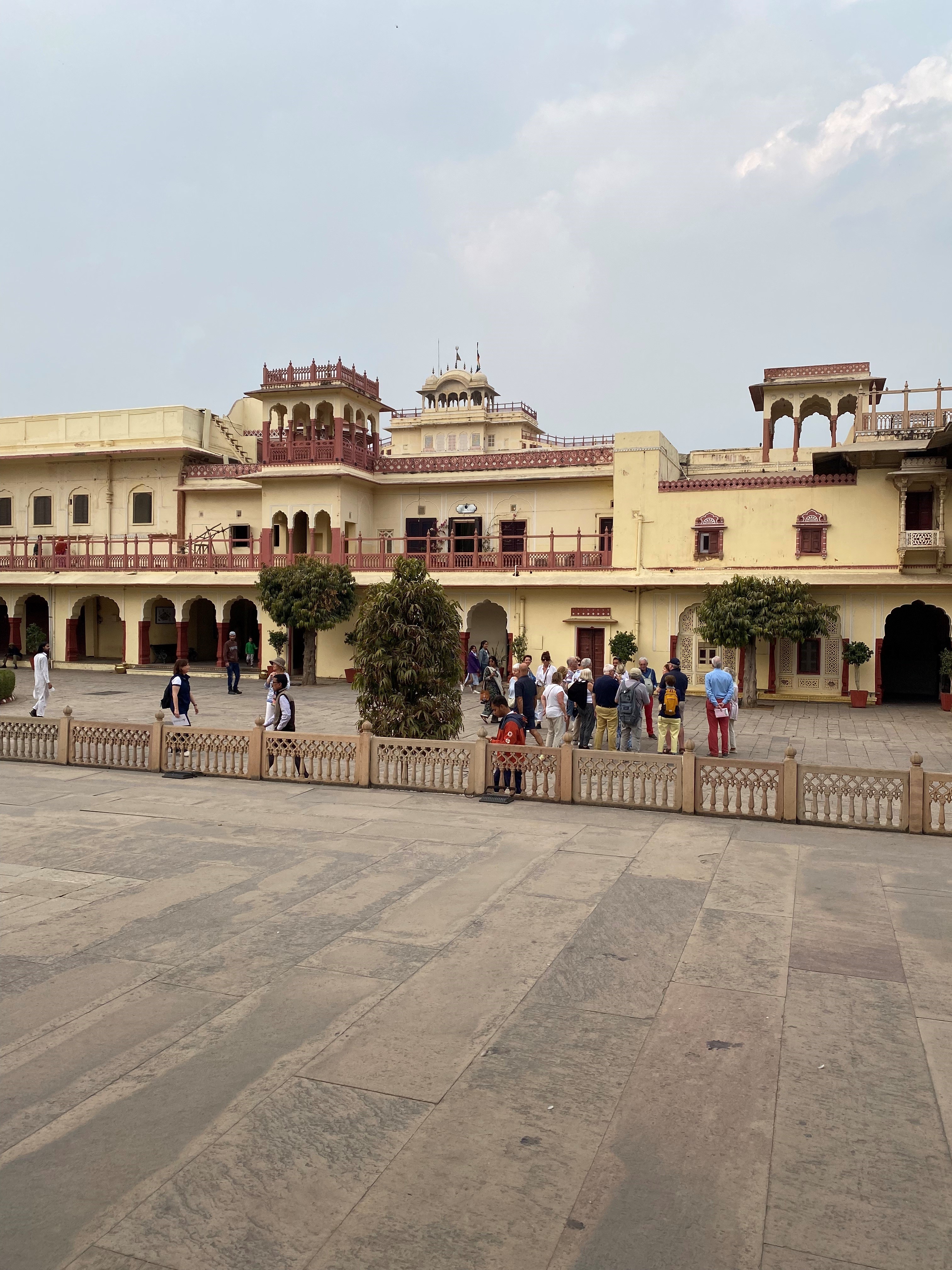
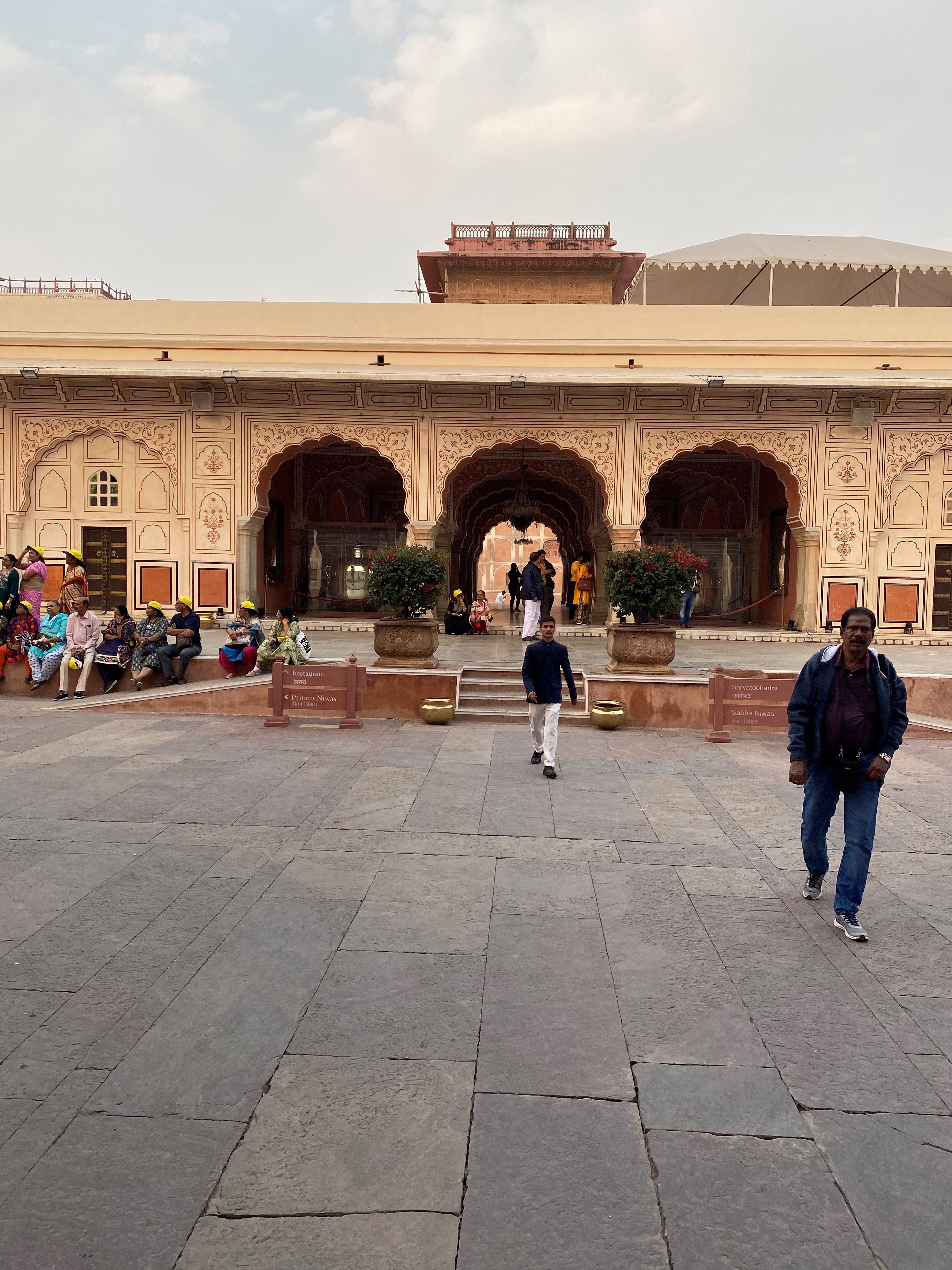
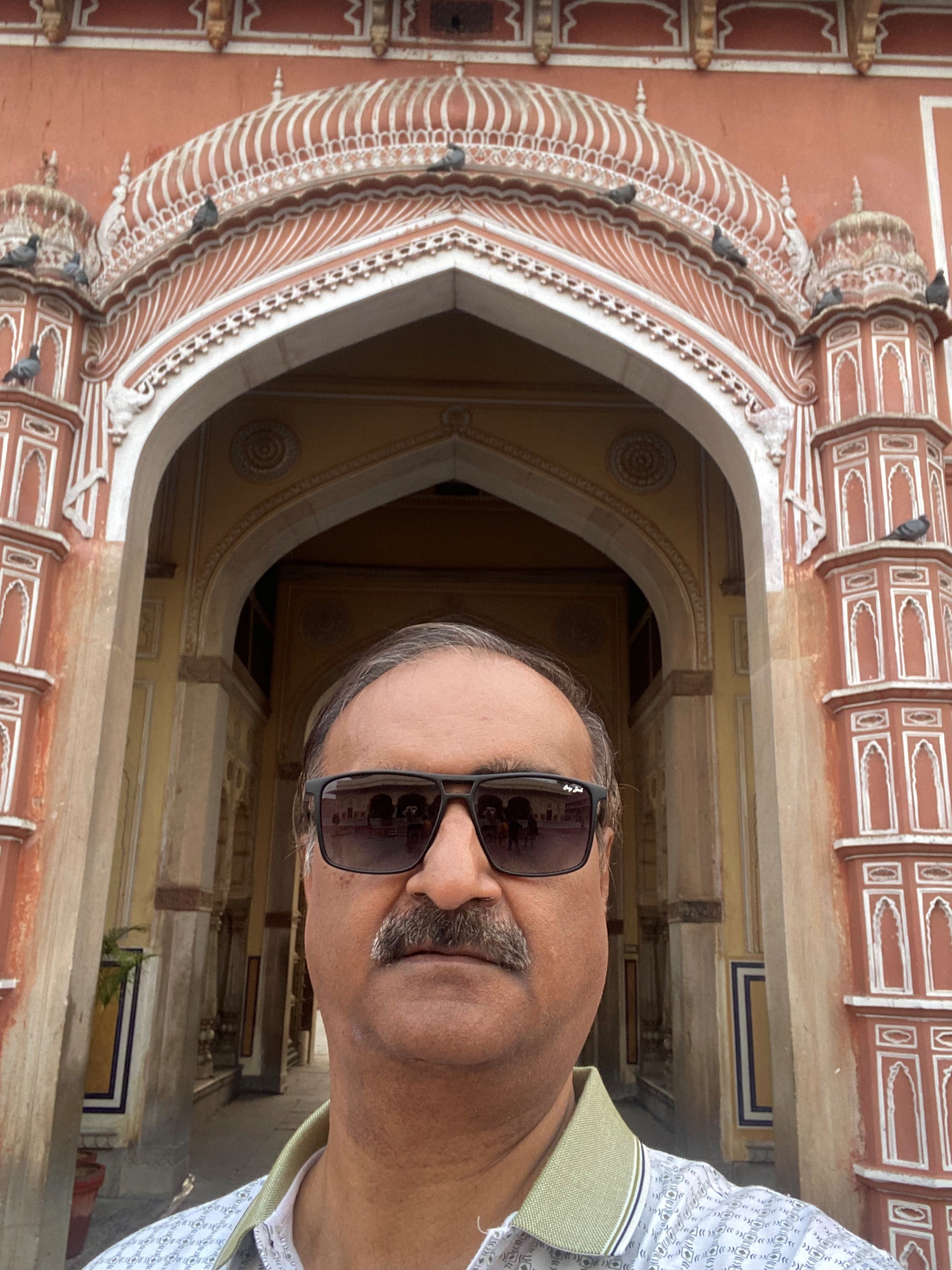
Sprawling courtyards, tastefully done-up buildings, imposing clock tower beckoned us. A wee bit tired, we did not take a detailed tour of the interiors, as we had to move over to see the famous Hawa Mahal too. Some light refreshments and a short drive later, we were at the famous Hawa Mahal or ‘Palace of the Wind’. The windows are jharokhas are constructed in such a way that air flows freely inside. While many of us would have had a look at the Hawa Mahal from outside in its pink/red glory, we were surprised to learn that this facade is the rear of the palace, and the main entrance is completely different and unrecognizable. Hawa Mahal is a five-storey structure in pyramidal form, with the first two floors having patios or courtyards, while the floors get narrower, as one goes up. Involved quite a bit of climbing on the steep, narrow stairs, that are well-maintained. The street-view from inside is truly amazing.
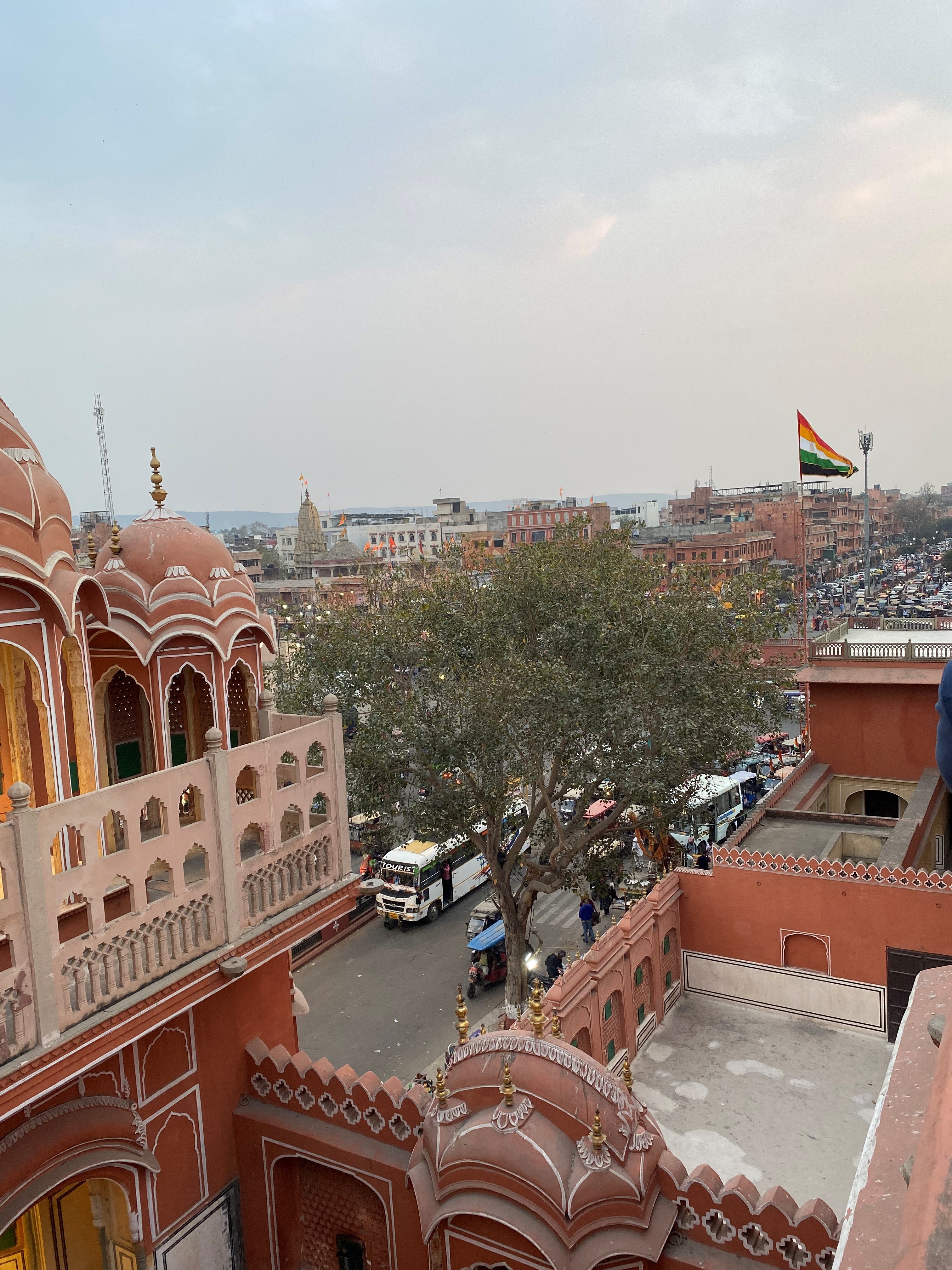
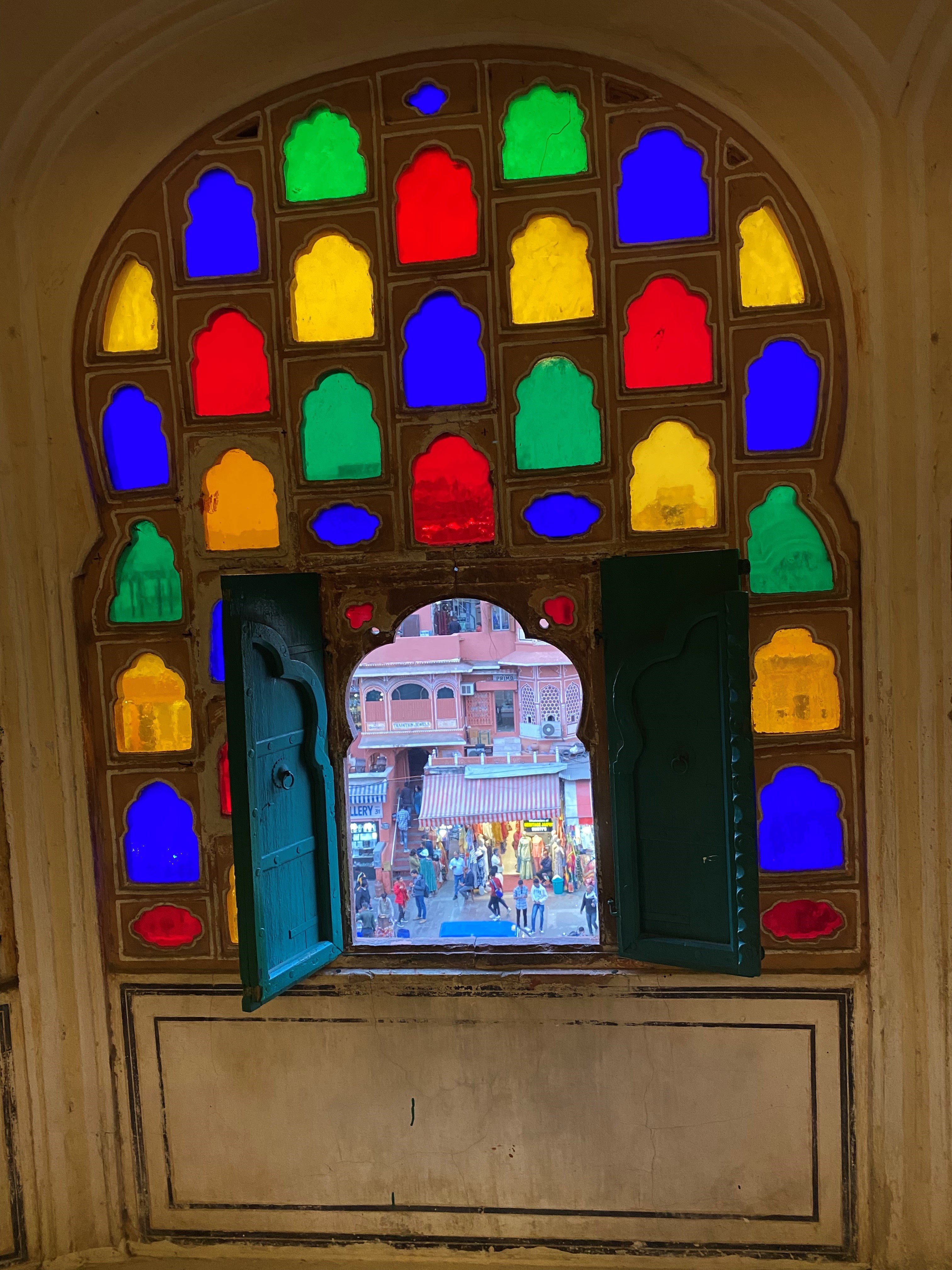
Early next morning after breakfast and a photoshoot with all of us in yellow, we set off for the first place of visit — Amer Fort or Amber Fort in the village of Amber, around 12 kilometers from Jaipur. There was a nip in the early morning air, even as the sun made a weak appearance. We were soon at the foothills of Amer Fort, traversing narrow roads through small villages on the hill, just outside the fort, we were amazed to see a traffic jam — jeeps galore, all ferrying tourists up to Amer Fort. We had picked up a guide on the way, a guide who could speak a bit of English, but conversed mainly in Hindi.
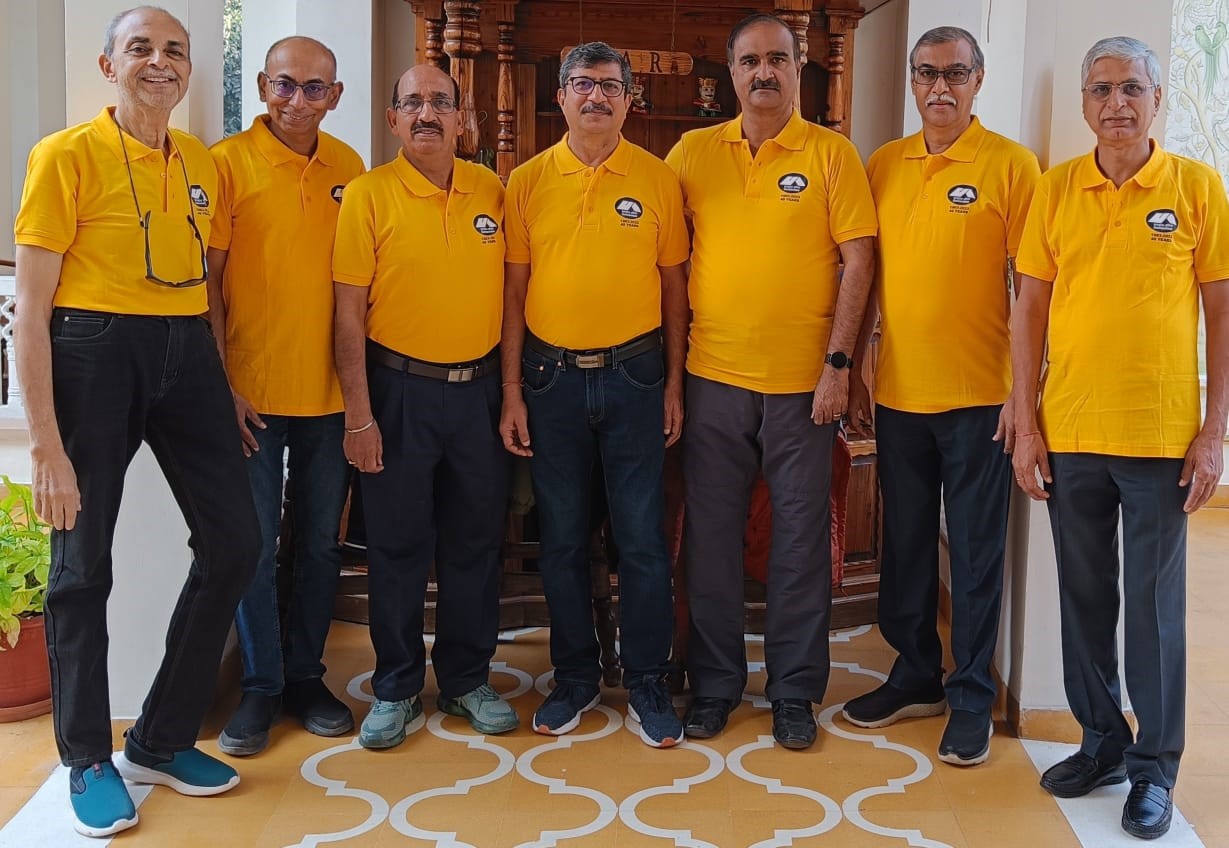
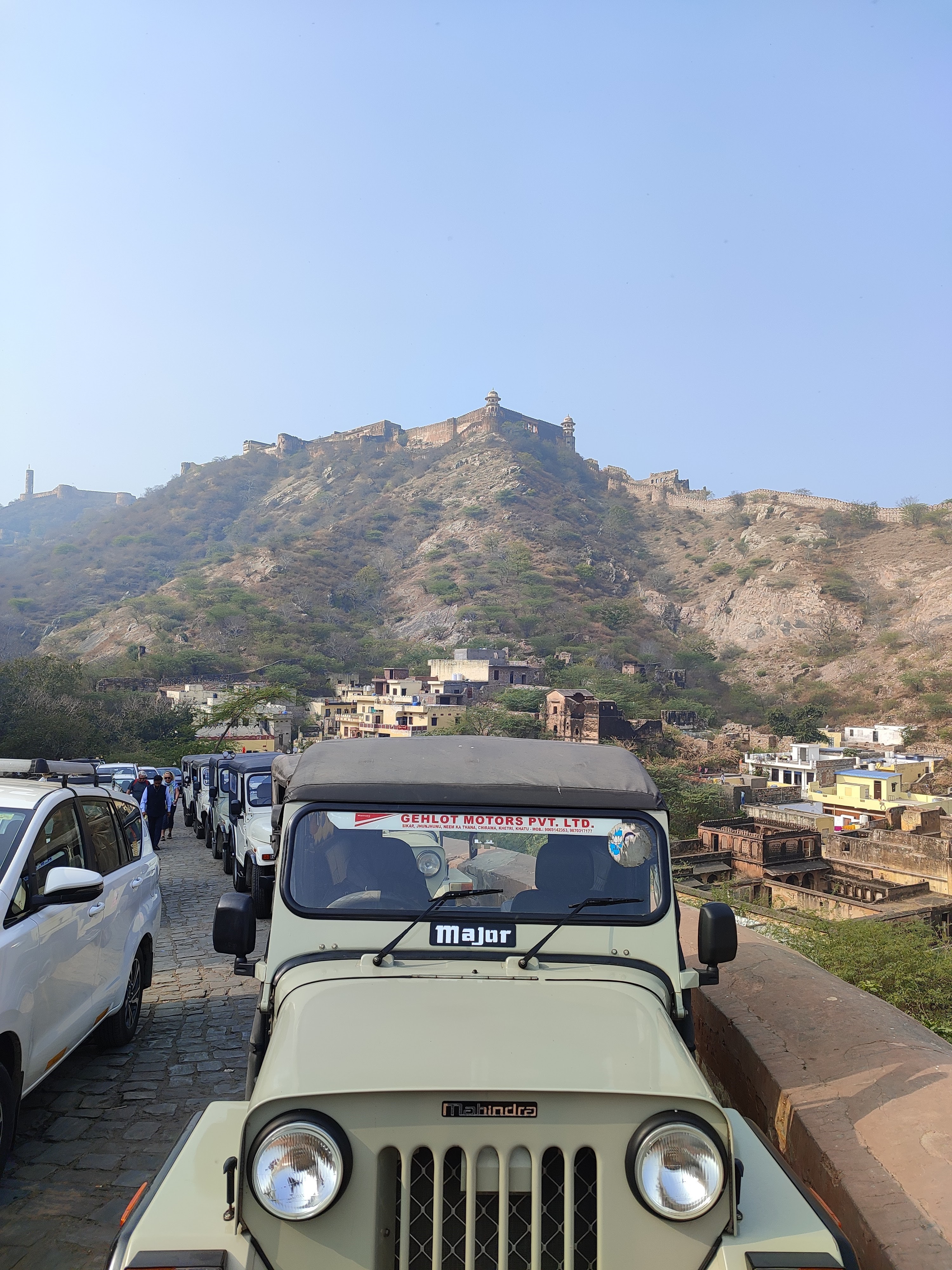
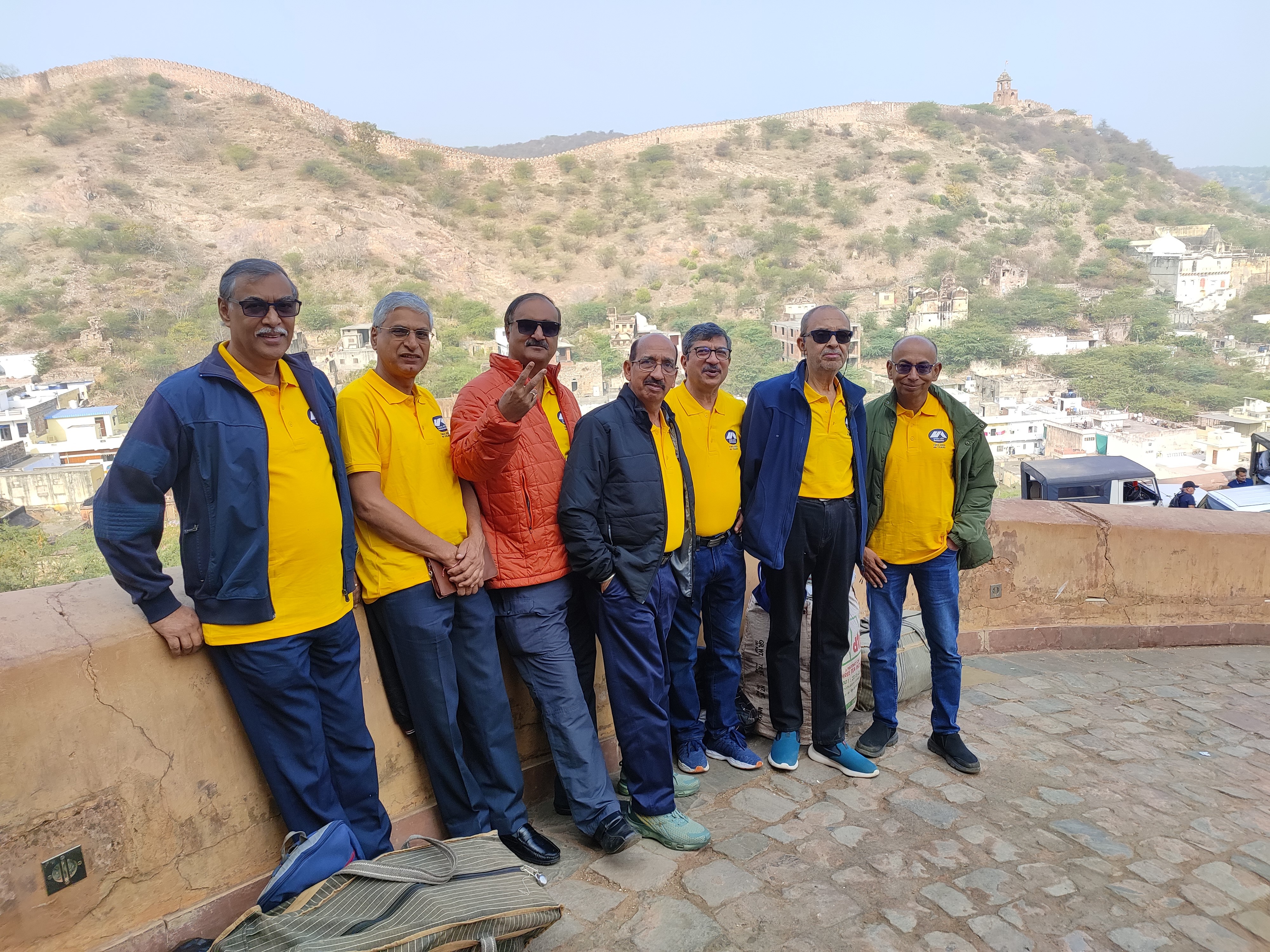
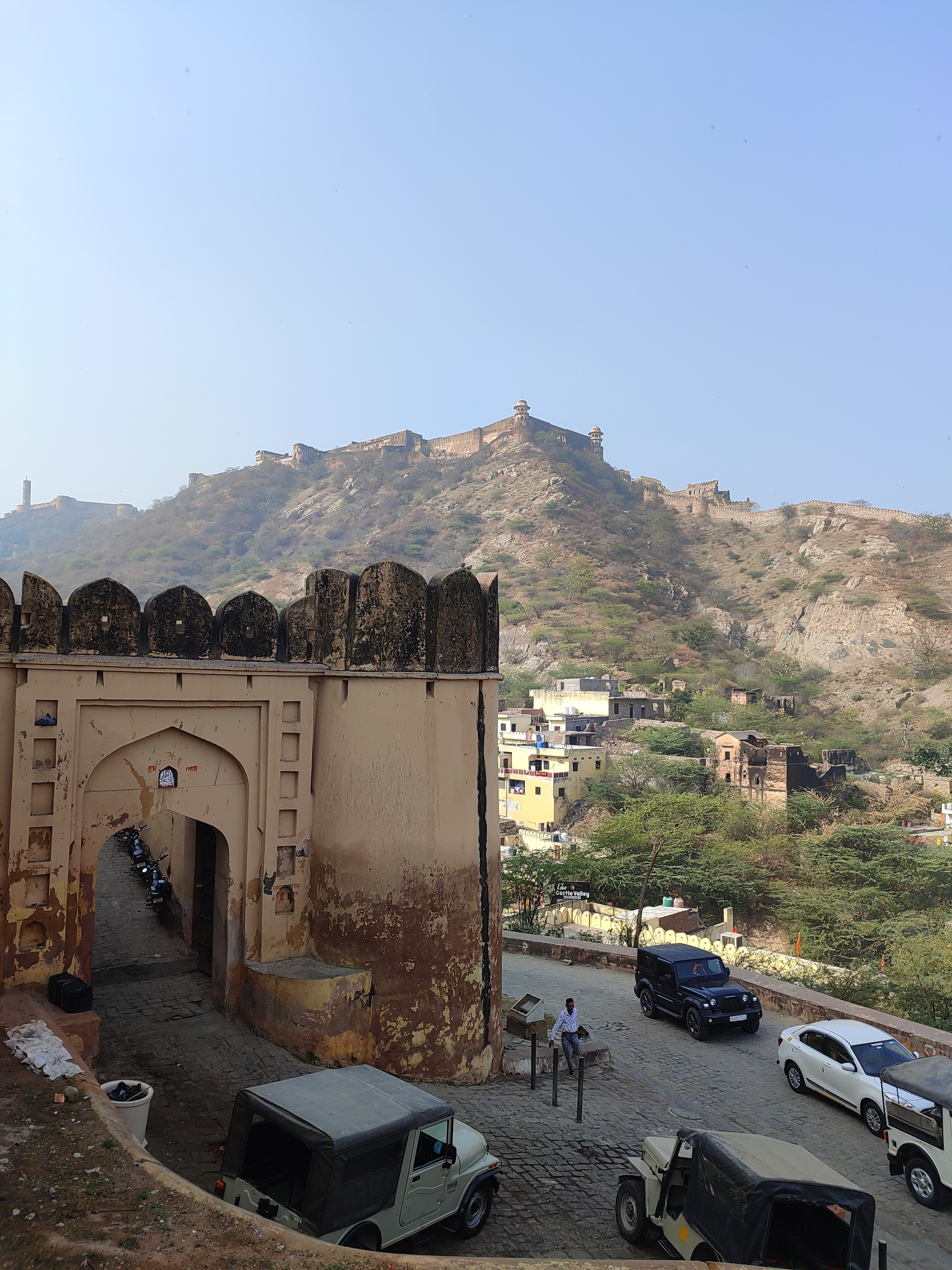
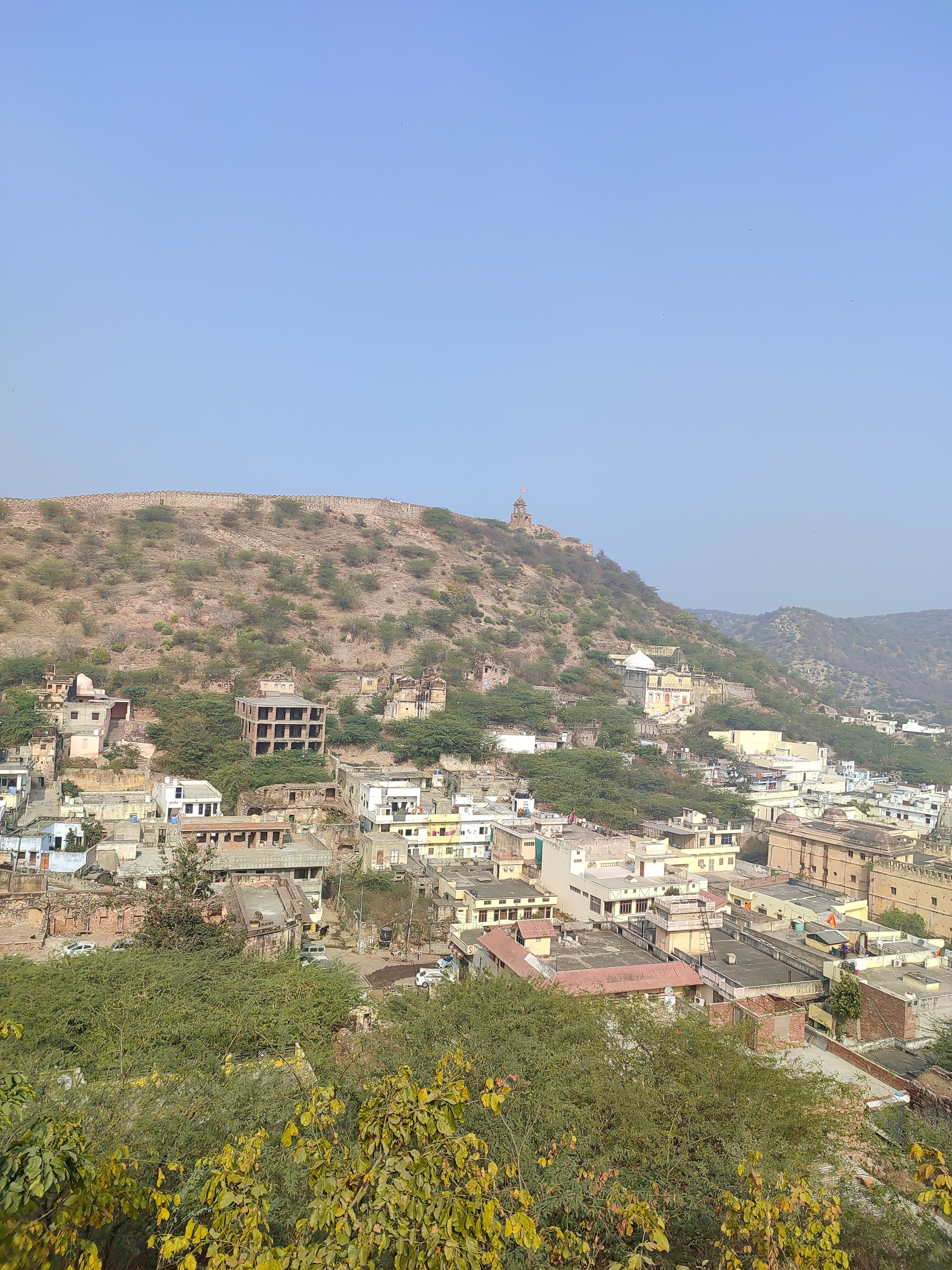
We were at the main entrance to the fort, and armed with our tickets, we stepped into the first courtyard. We were told that Amer was the capital city of the Rajput Maharajas, built by Sawai Man Singh and later expanded by Jai Singh I. This was before, the Rajputs decided to create a new capital in the plains, a planned city, we know today as Jaipur. Amer Fort is said to be connected with Jaigarh Fort on an adjoining hill through secret passages and the two forts together constituted a single complex. An UNESCO World Heritage site.
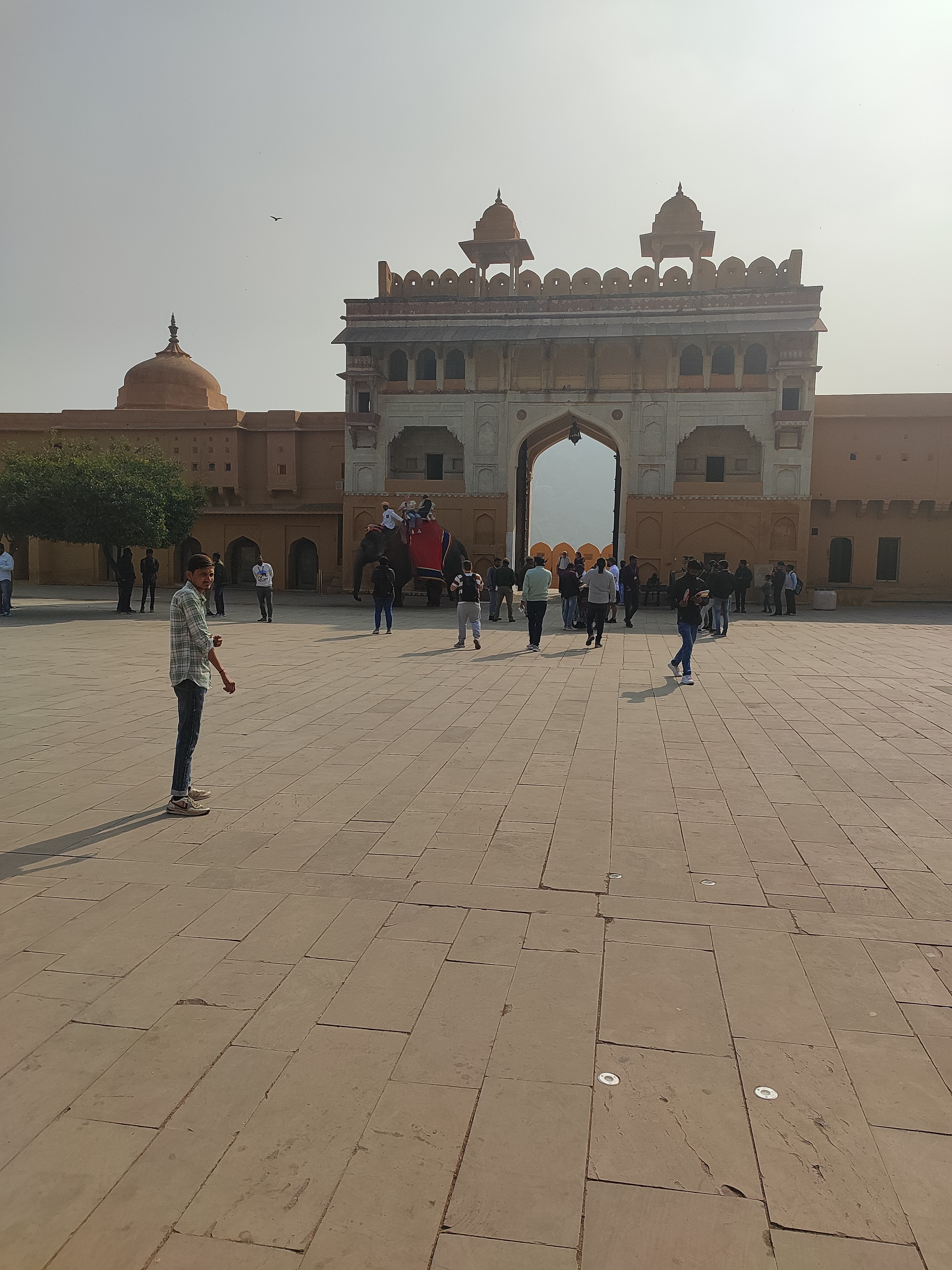
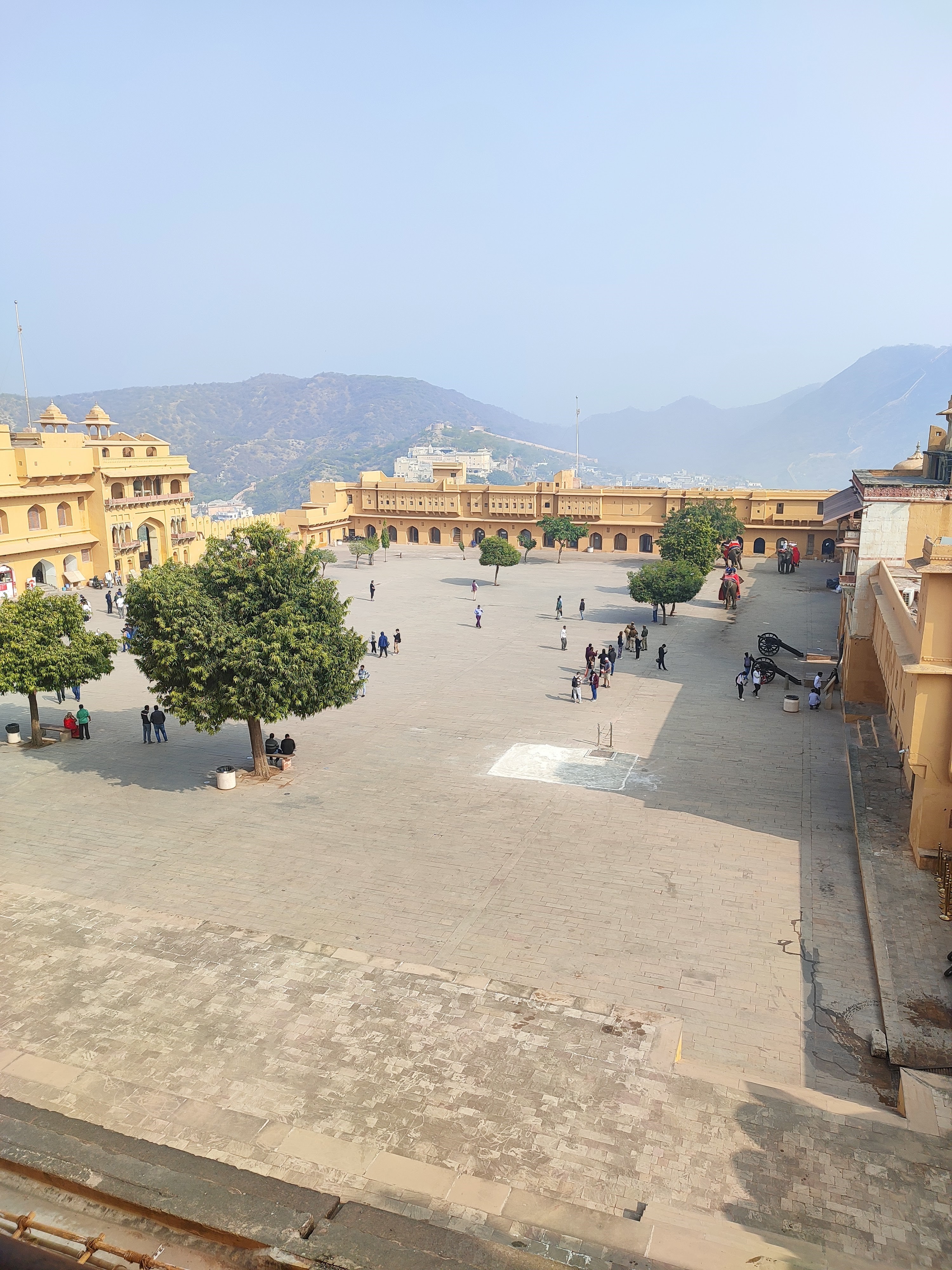
The first courtyard, we learnt was the one where parades were held by the victorious army after conquests. We could see tourists on caparisoned elephants, coming up from the foot of the hillock, up a slope and then parading along this courtyard. A short prayer at the Shila Devi Temple, (where animal sacrifices used to take place in the past, we were told) and then we climbed up to the next level
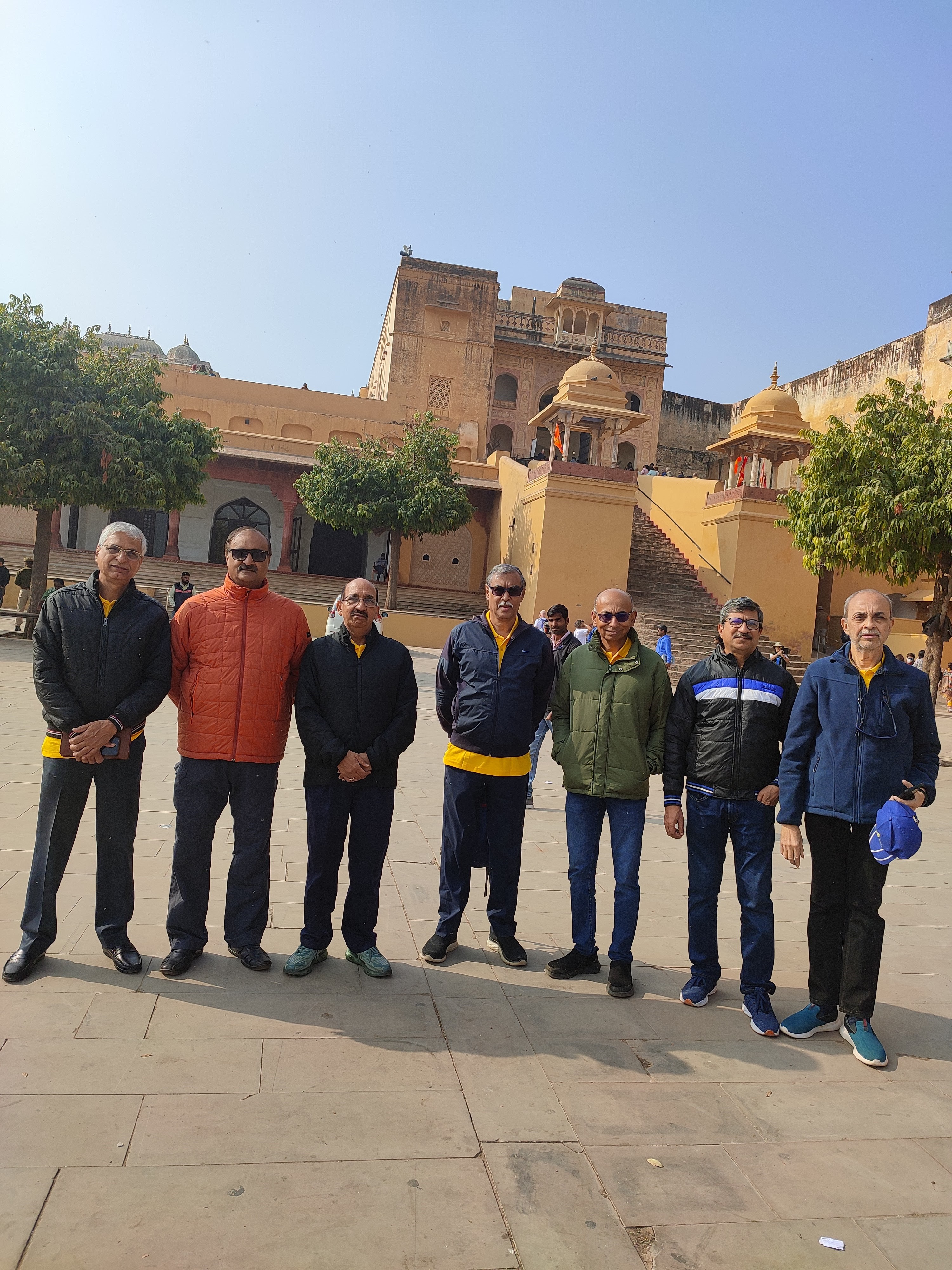
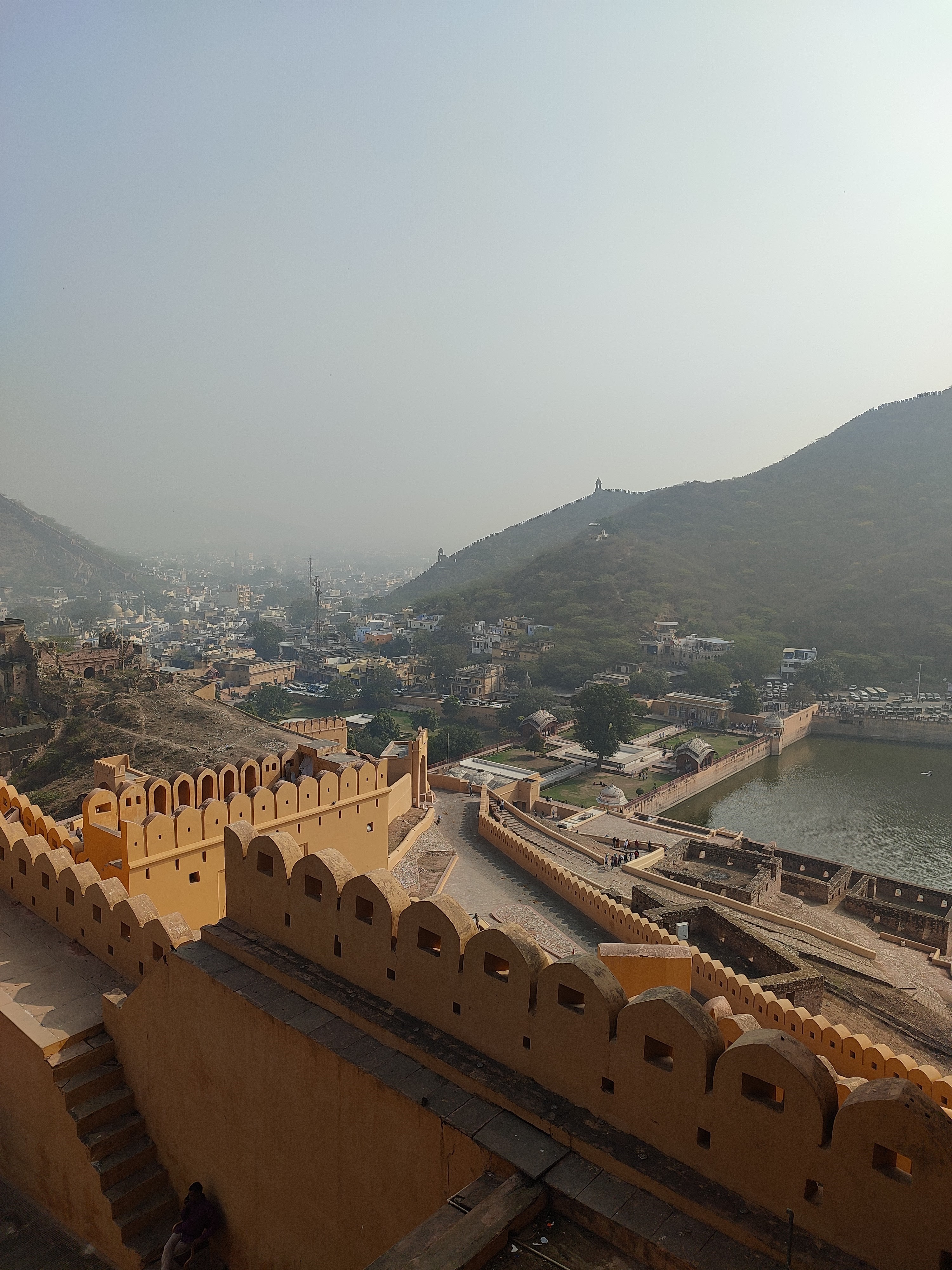
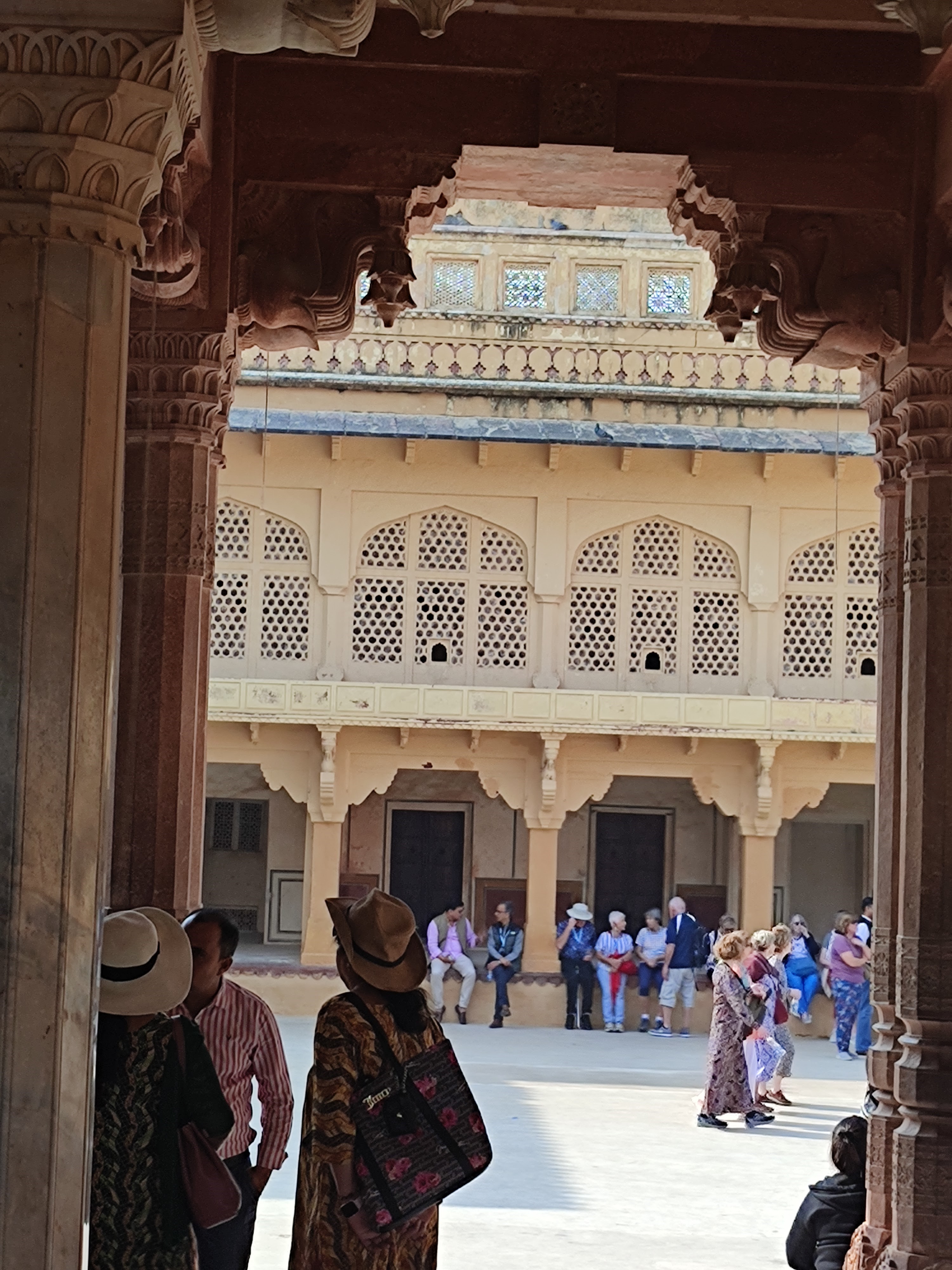
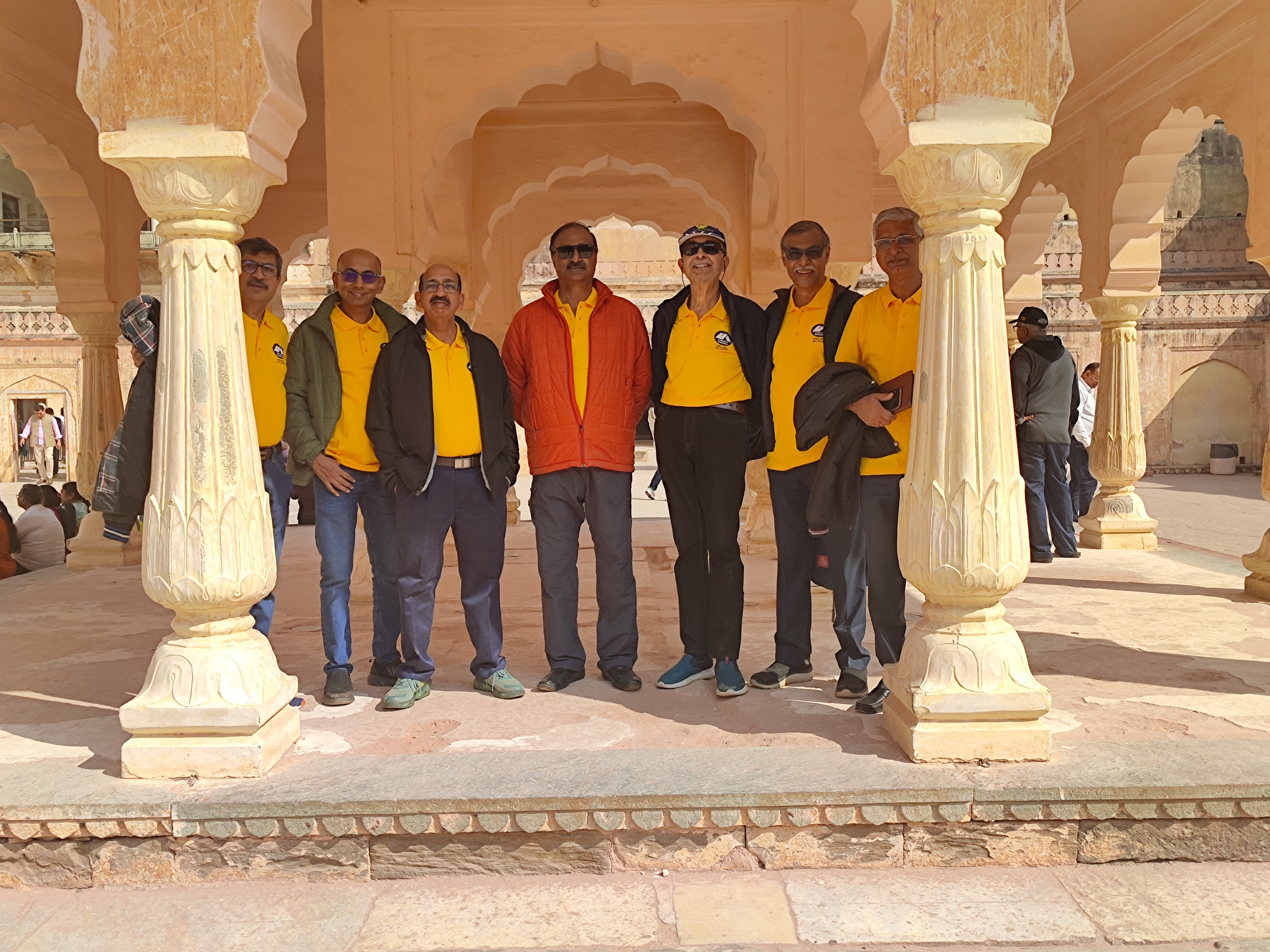
The Diwan-e-Aam, the Diwan-e-Khaas, the Sheesh Mahal or Glass Palace are sights to behold, with oh so many spots for Instagrammable pictures. Man Singh had twelve queens and he had twelve private staircases leading to each of the queens’ chambers, without the others knowing. The queens did not have access to the king’s chamber though. Gardens, water bodies to cool the air, the opulence is palpable.
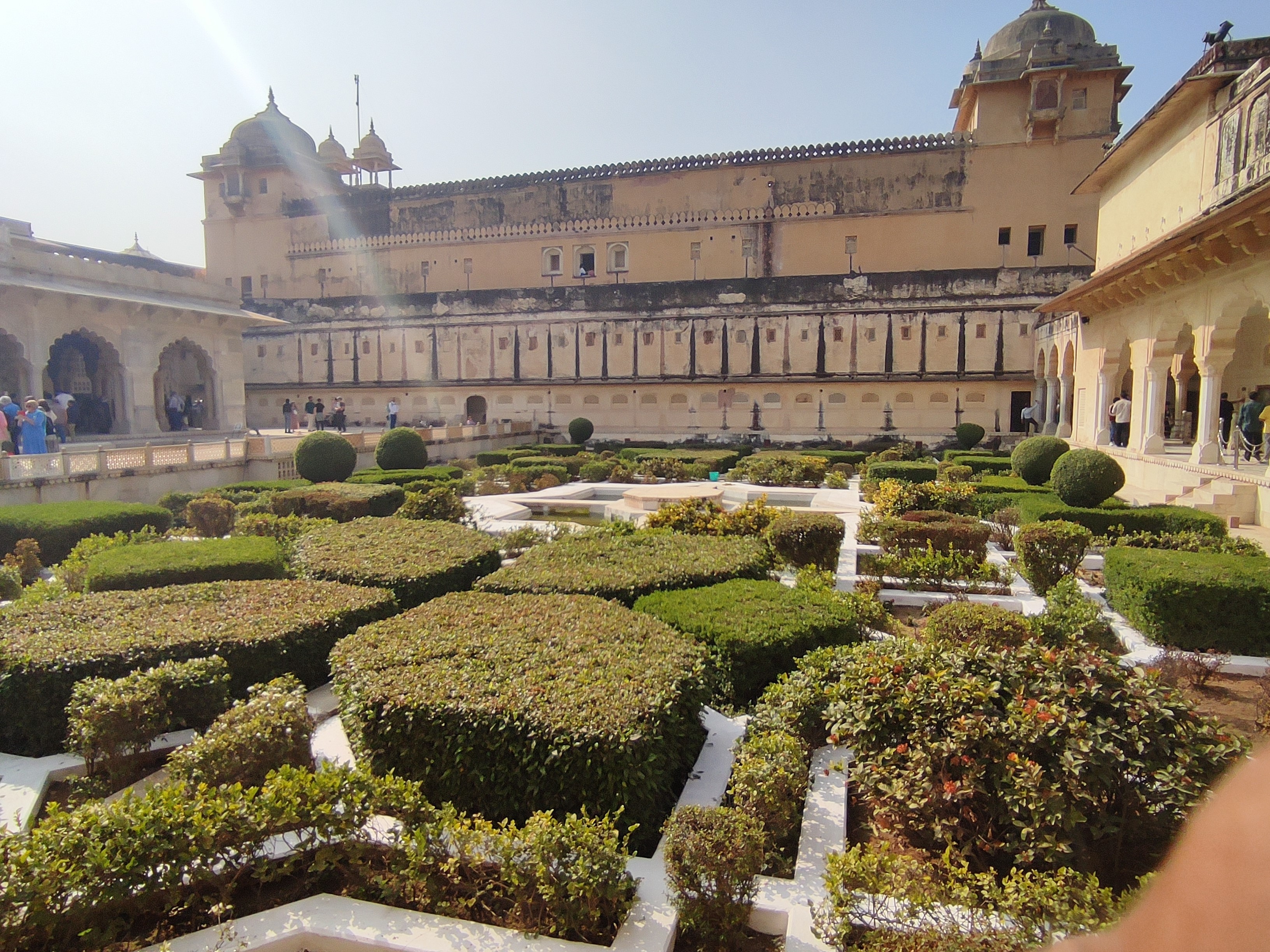
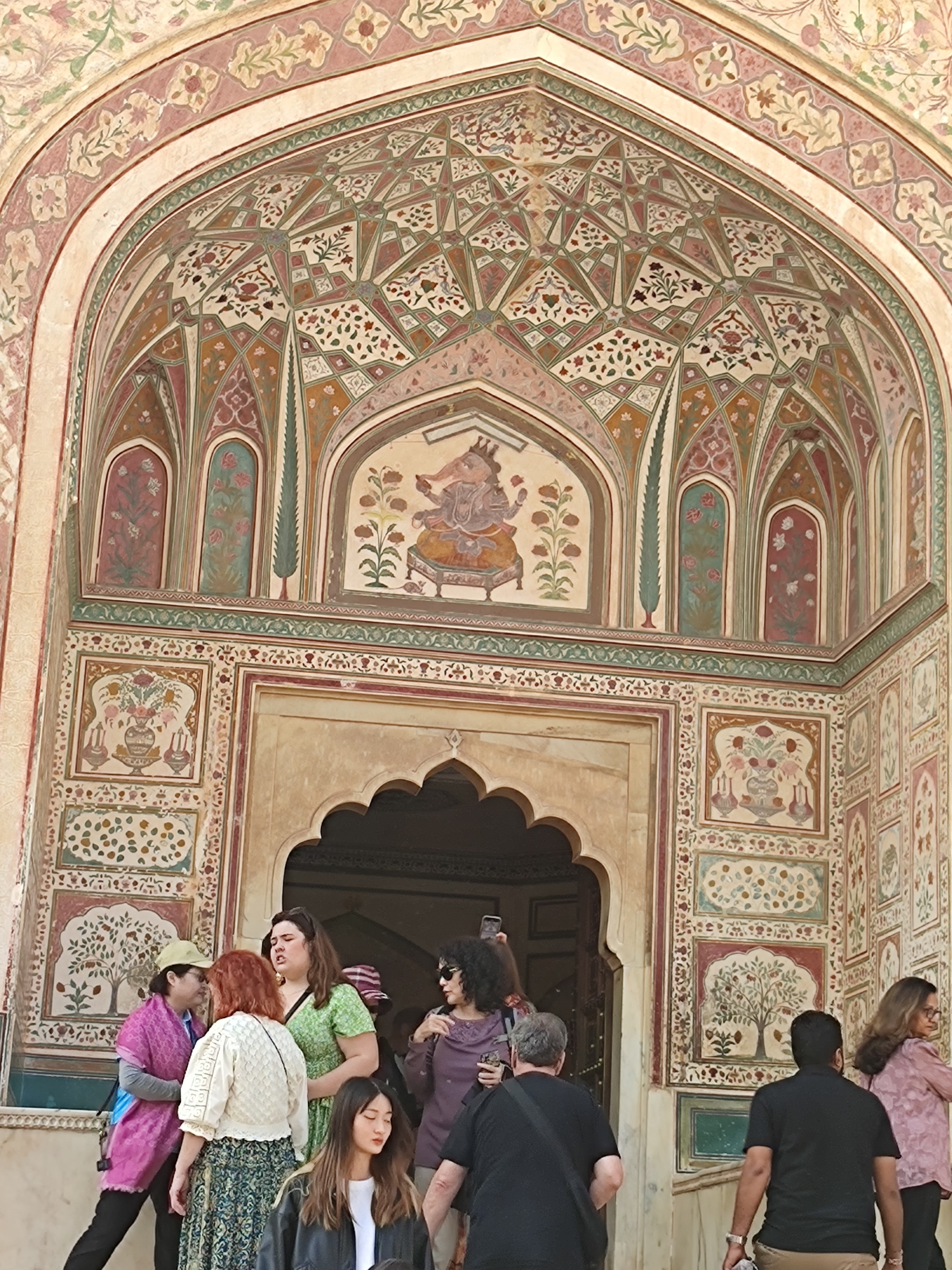
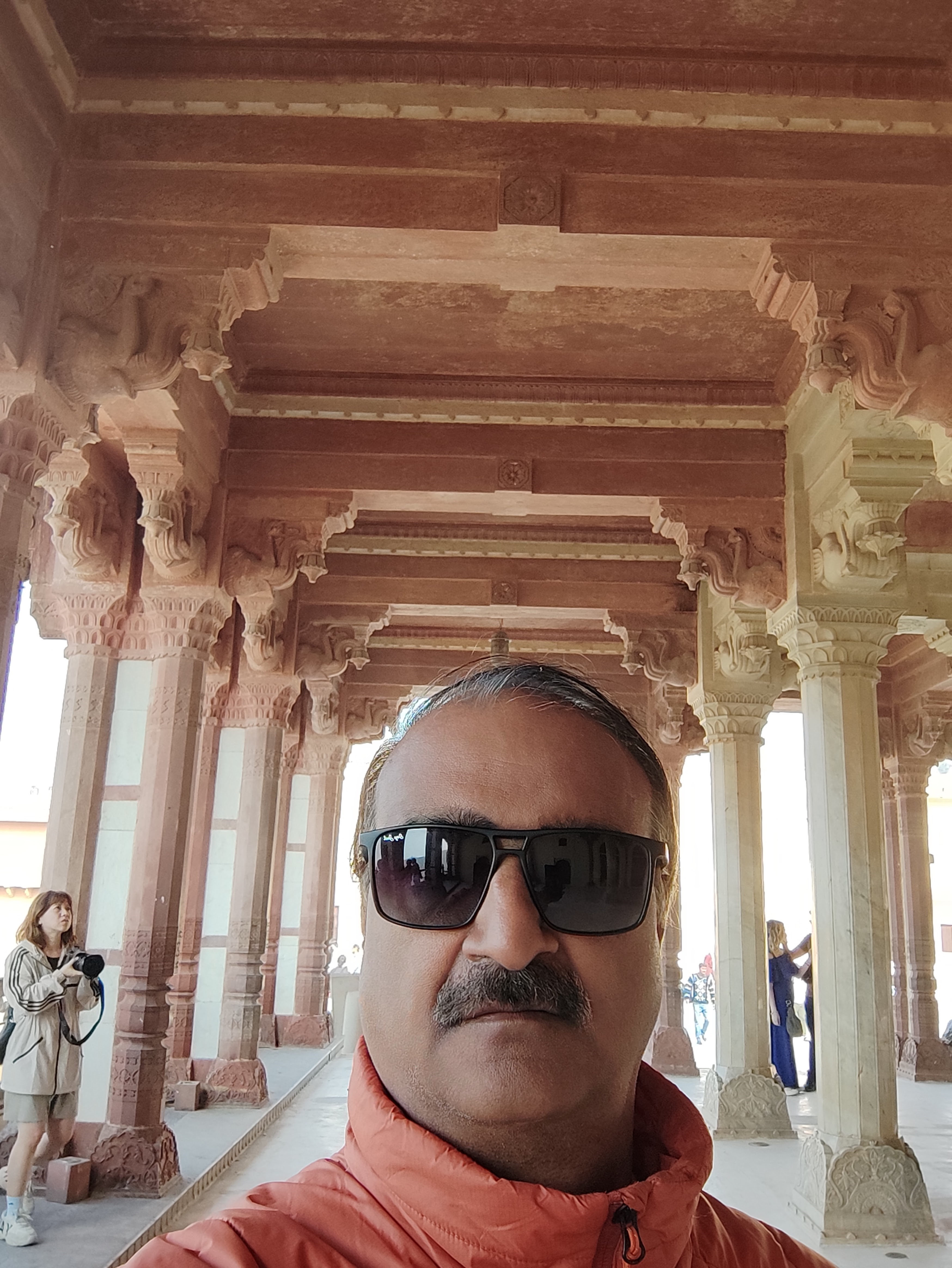
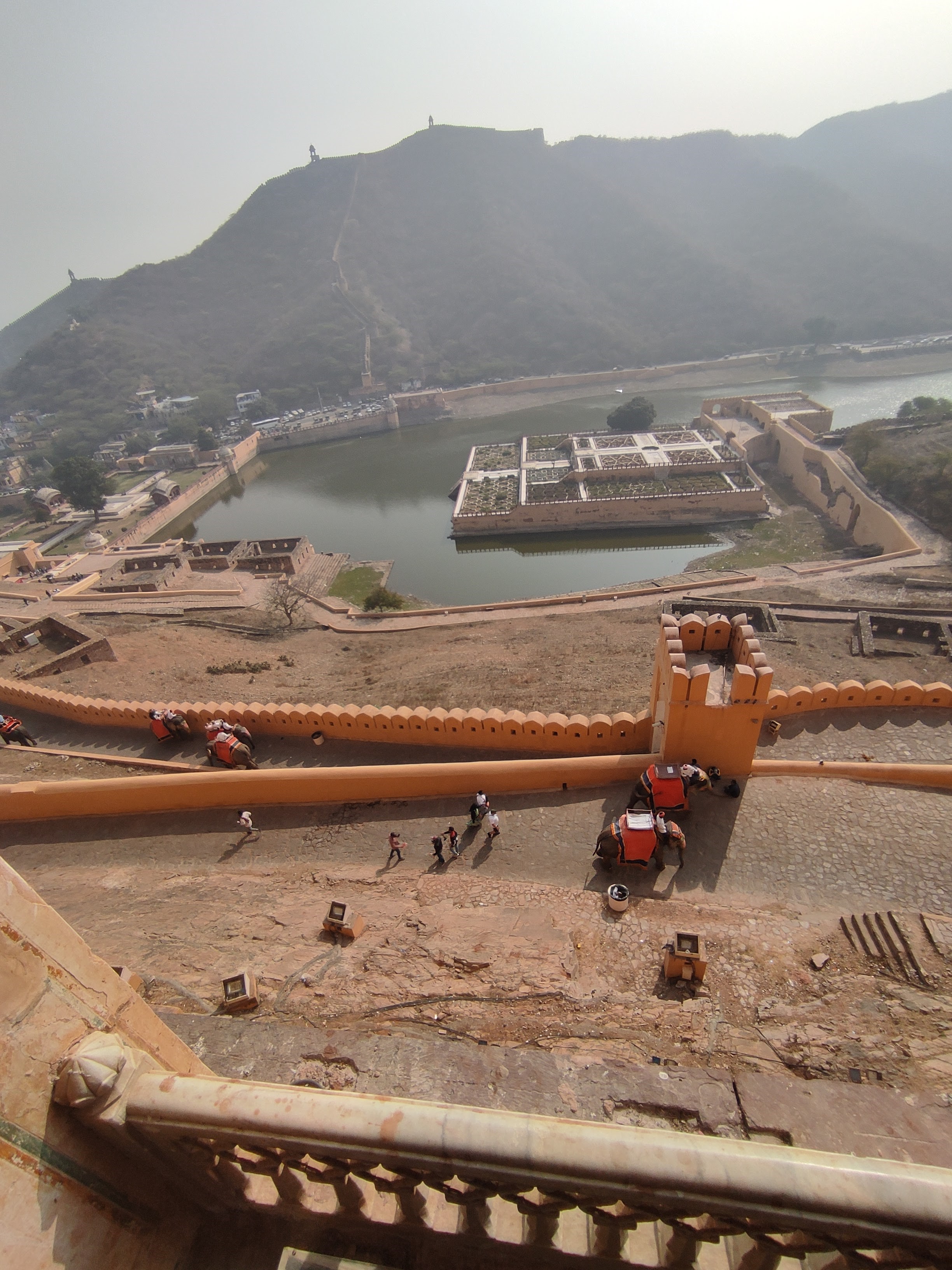
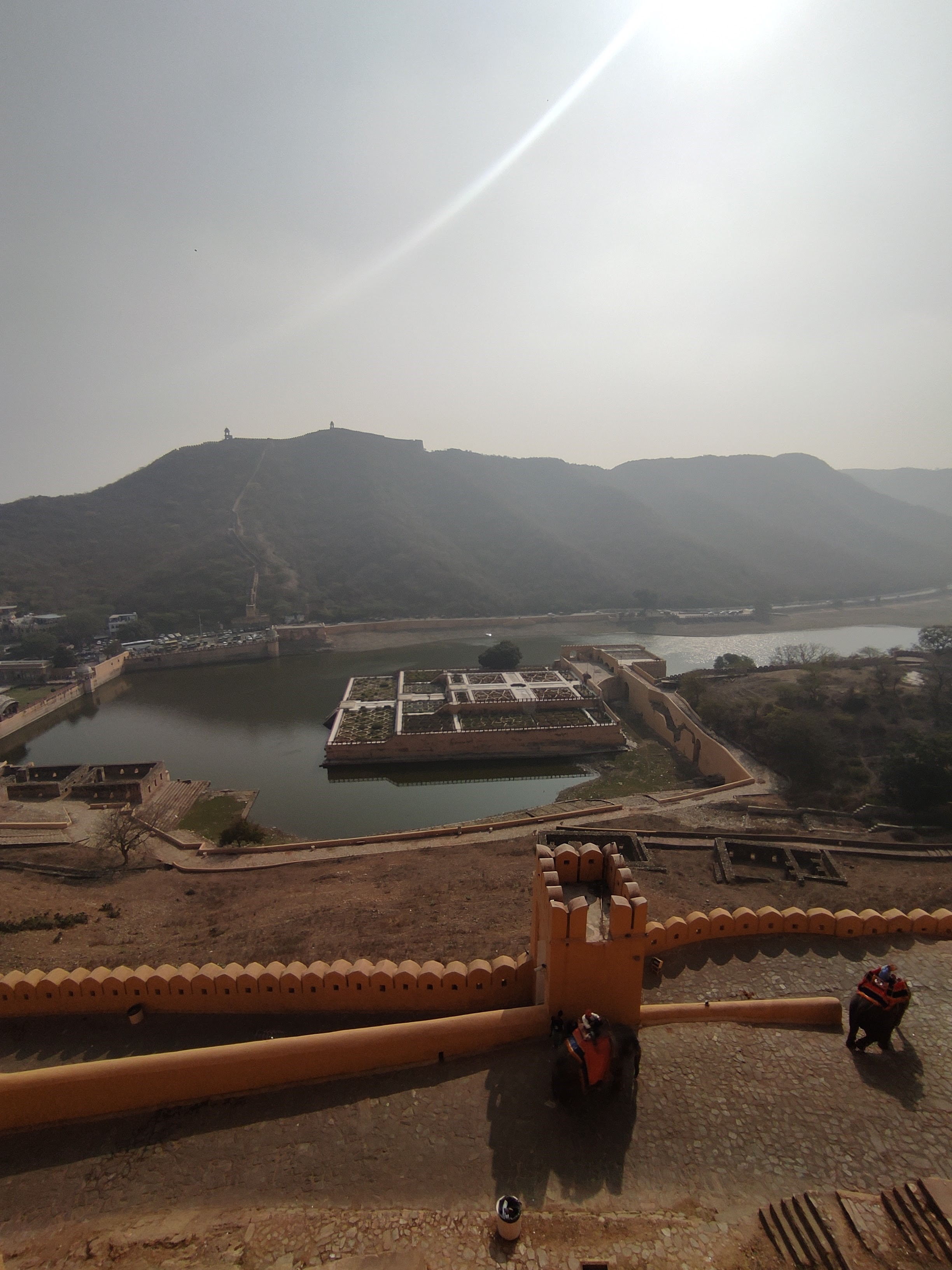
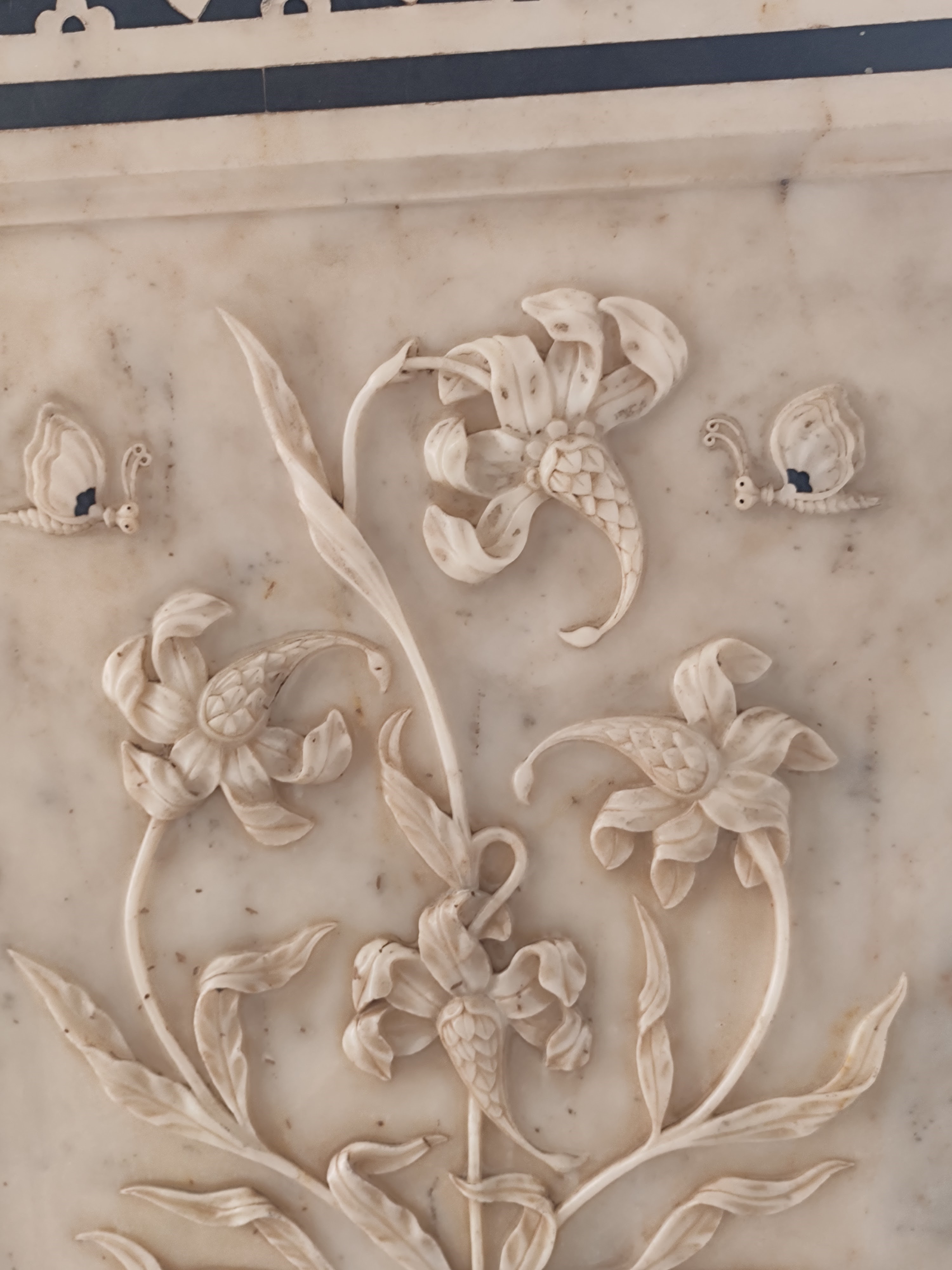
Amazing artistry on marble and glass!
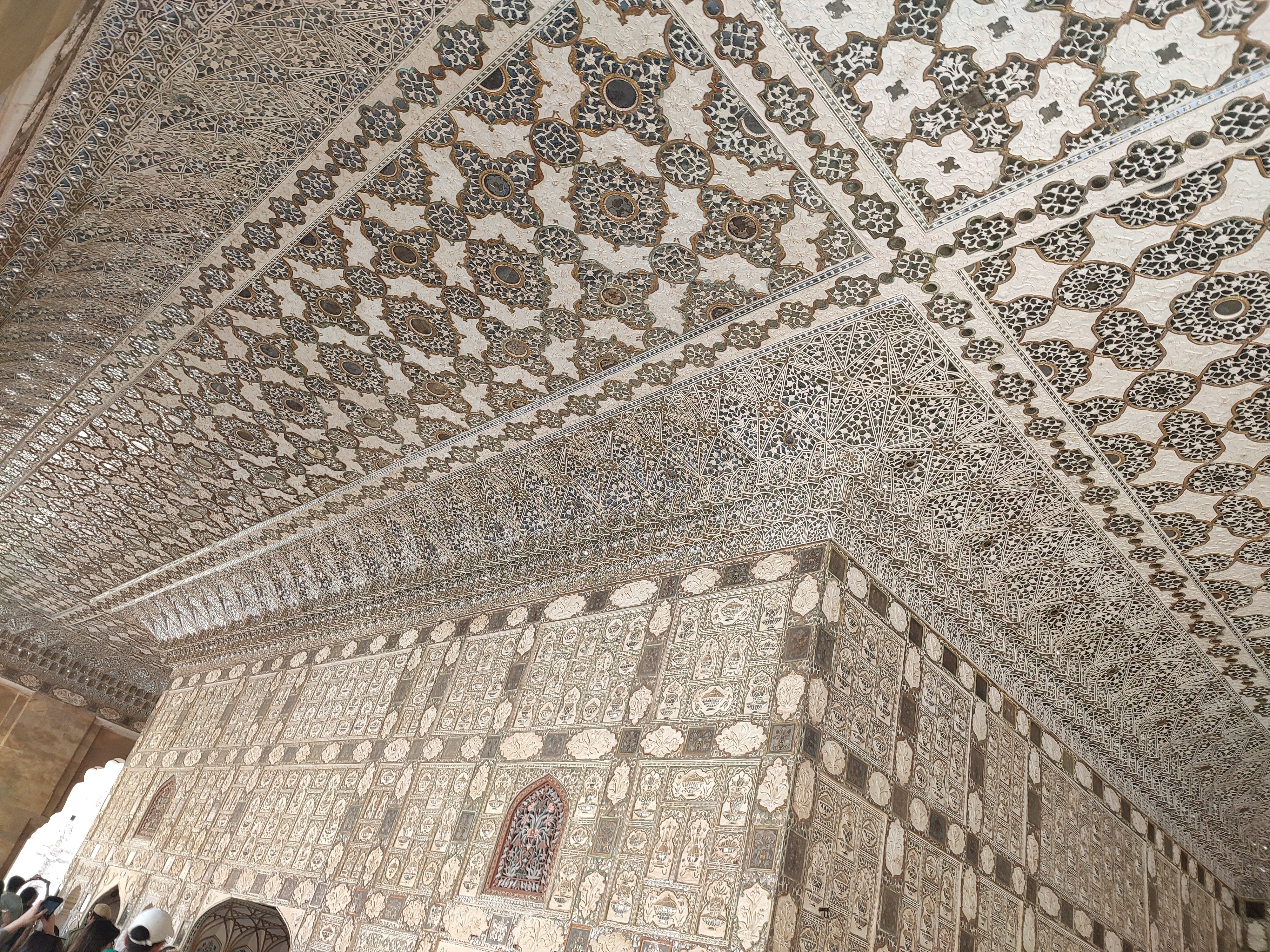
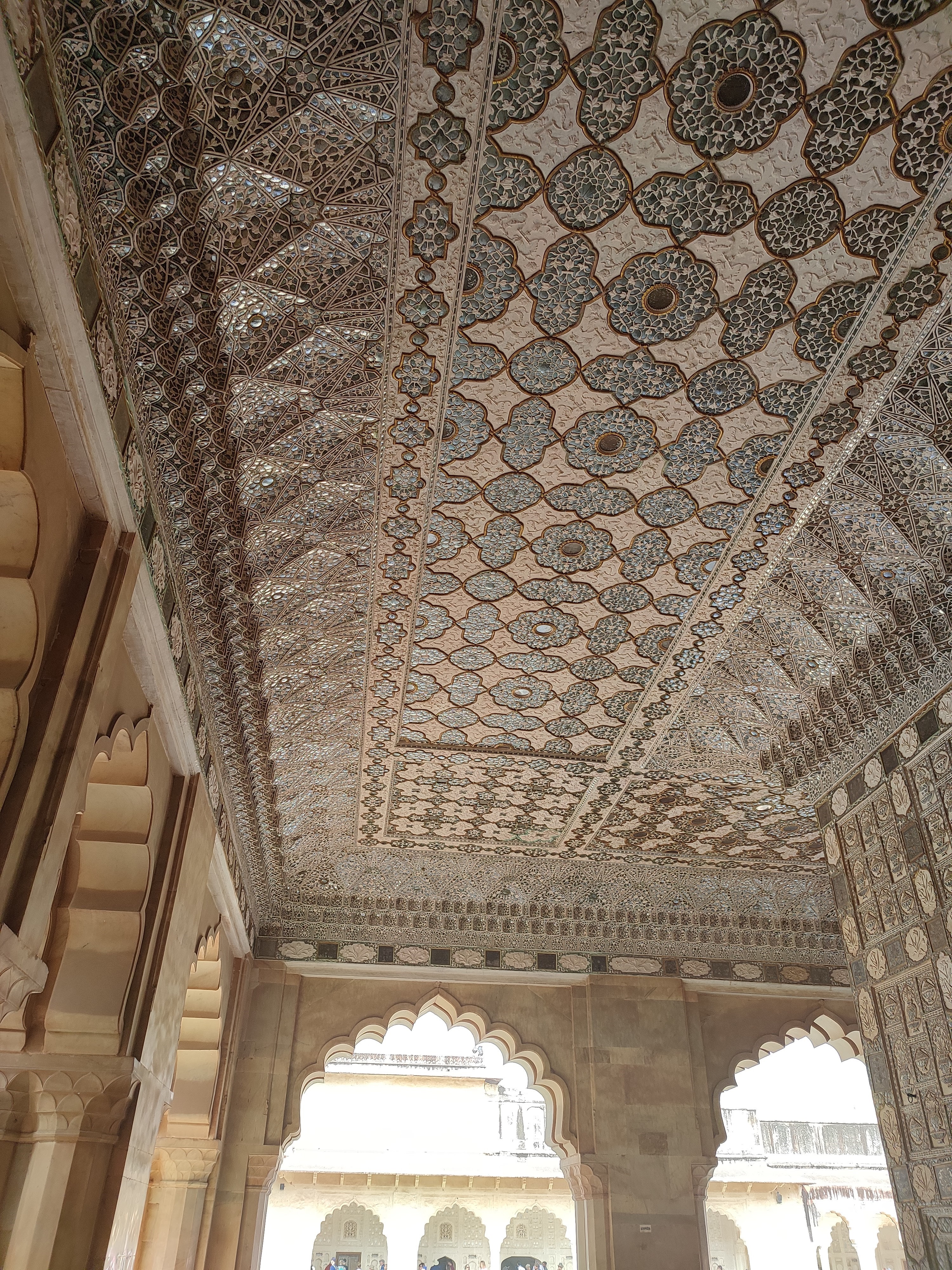
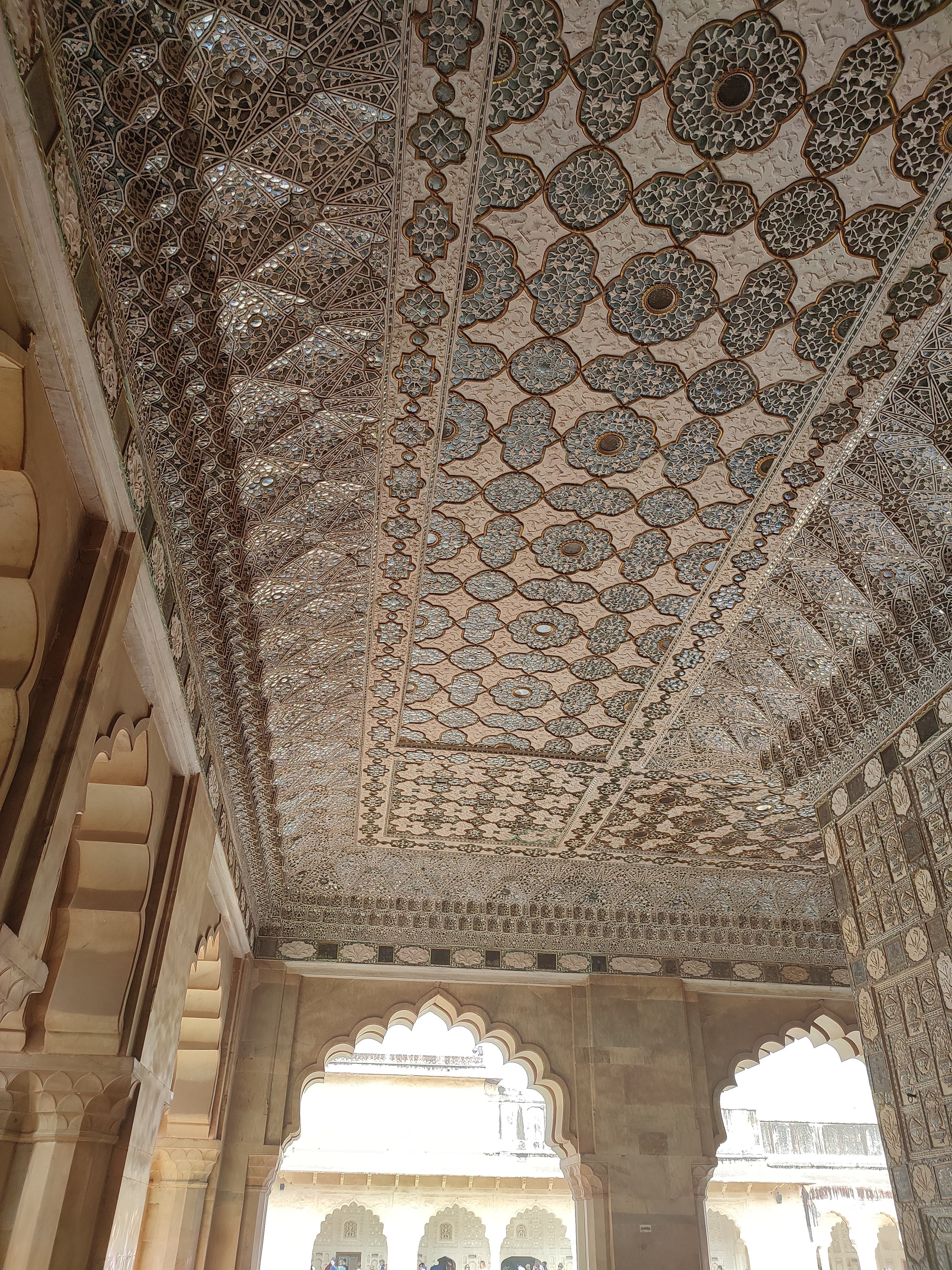
Time to wind up our visit to Amer, where we had spent over two hours. Downhill was quicker and the guide insisted on our seeing a ‘block-printing’ factory and buying some souvenirs. Being the usual ‘tourist bait’, we politely refused and only stopped a few kilometers down the road to click a few snaps.
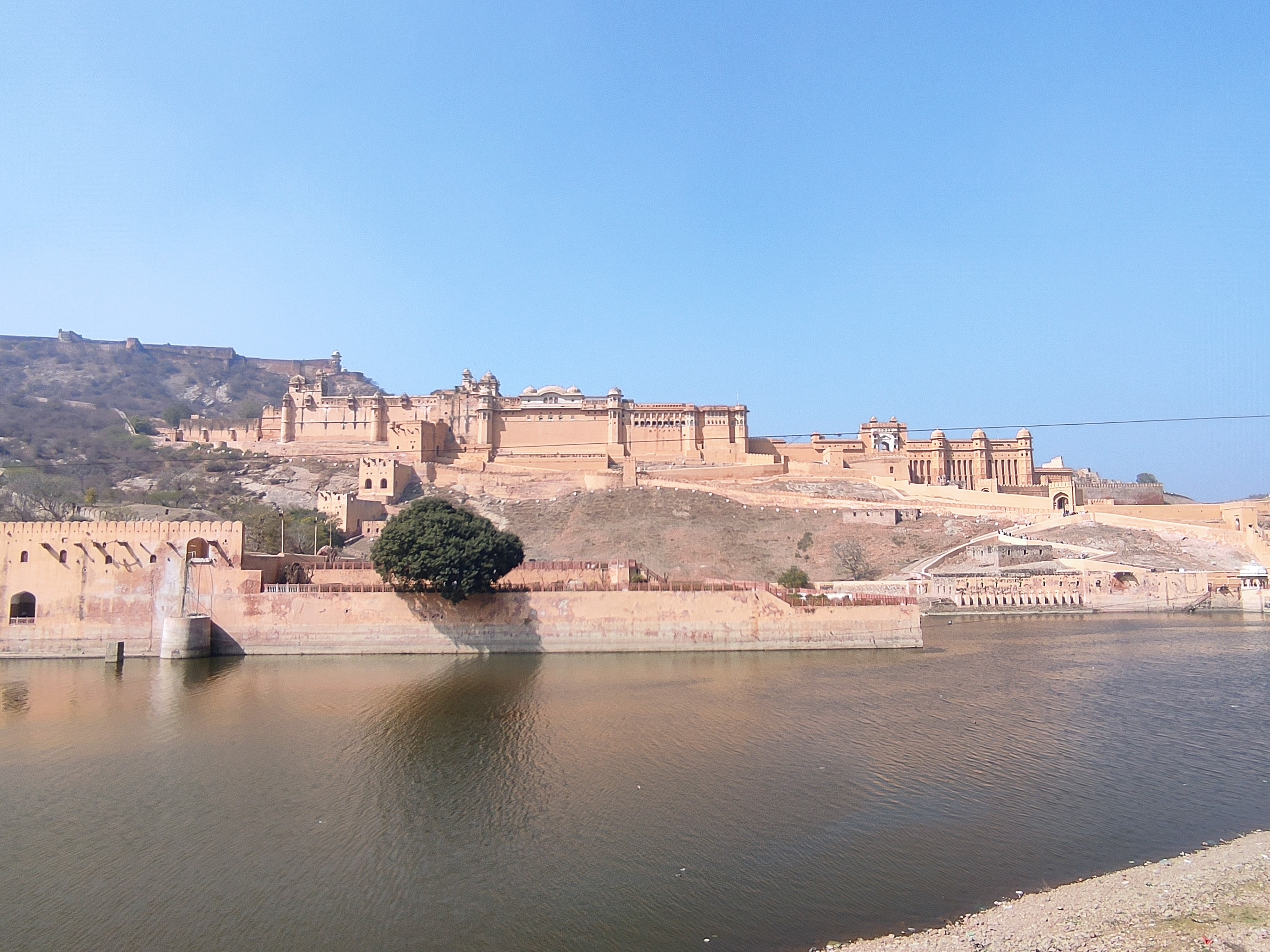
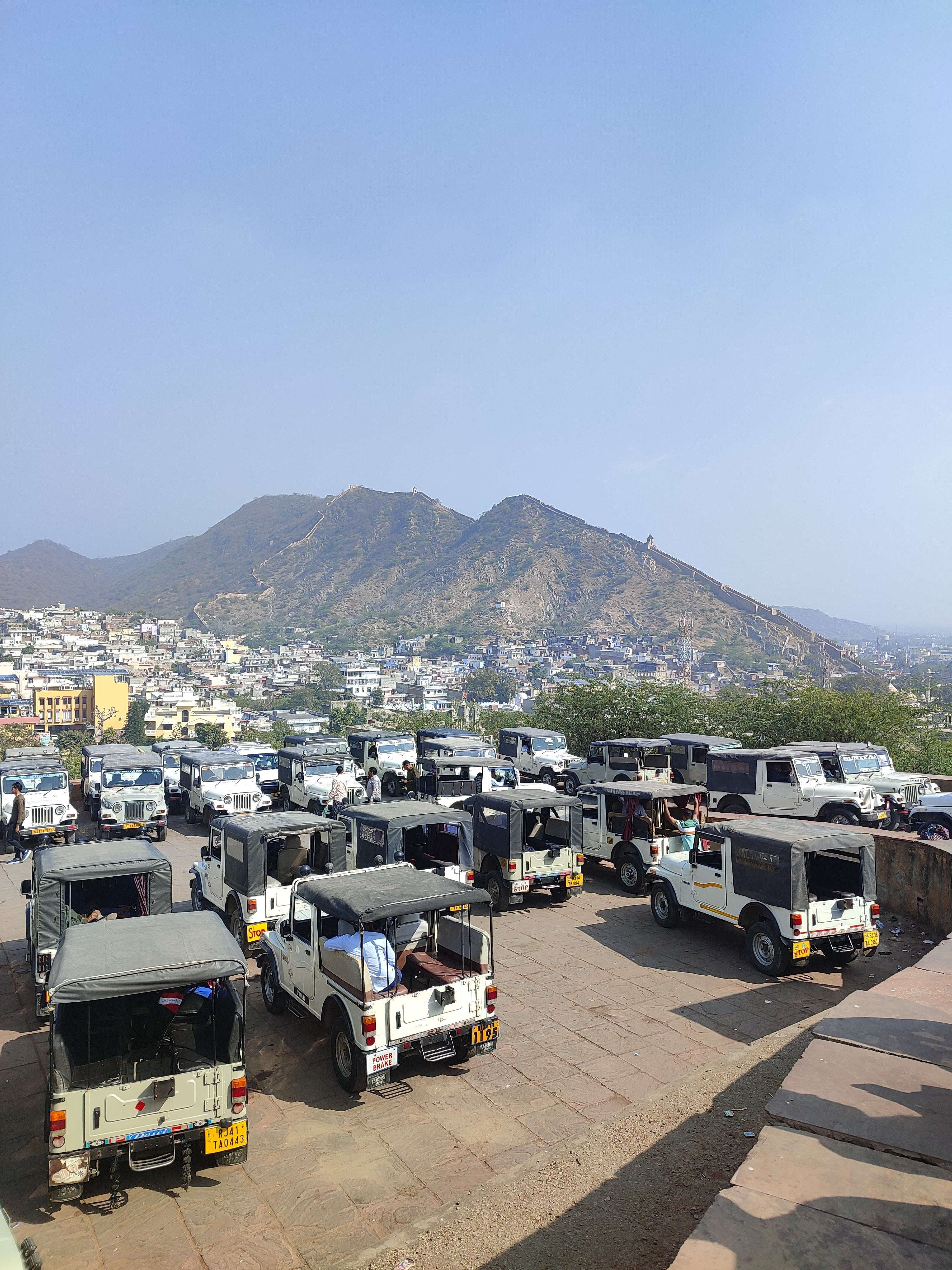
Lunch done, we were all excited to undertake the Leopard Safari at Jhalana, near to the airport. We reached there quite early and had to wait for the counters to open so that our tickets booked online could be checked and a jeep allotted to us. This leopard safari at Jhalana lies within Jaipur city, a dry forest area of around 24 kilometers and abounding in leopards. Only, if you are exceptionally unlucky, will you fail to see a leopard. As we waited for the counters to open, we had a cup of tea and had a look at the small information center that had a honor-board of the leopards in the area. There is also a souvenir shop inside.
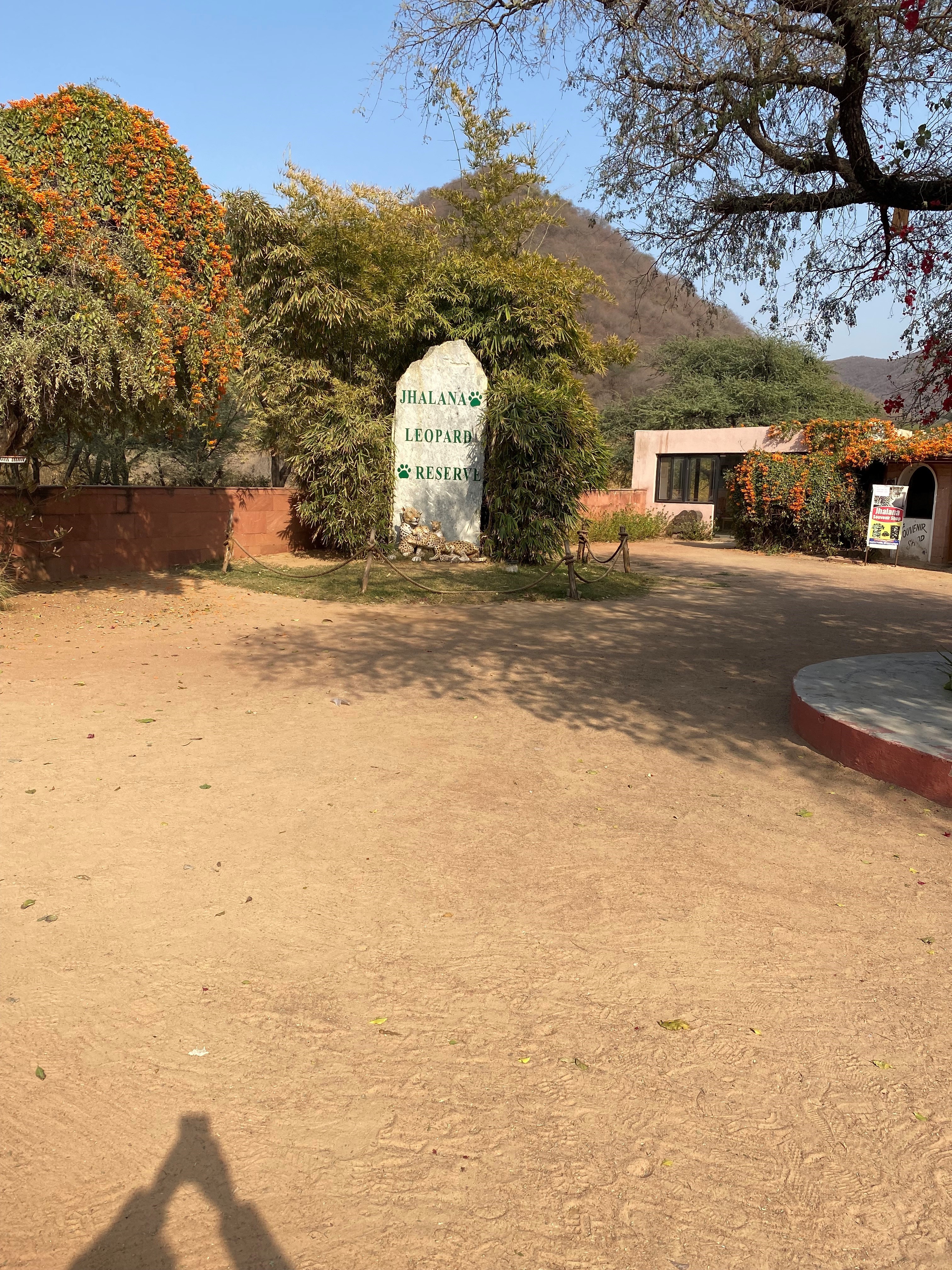
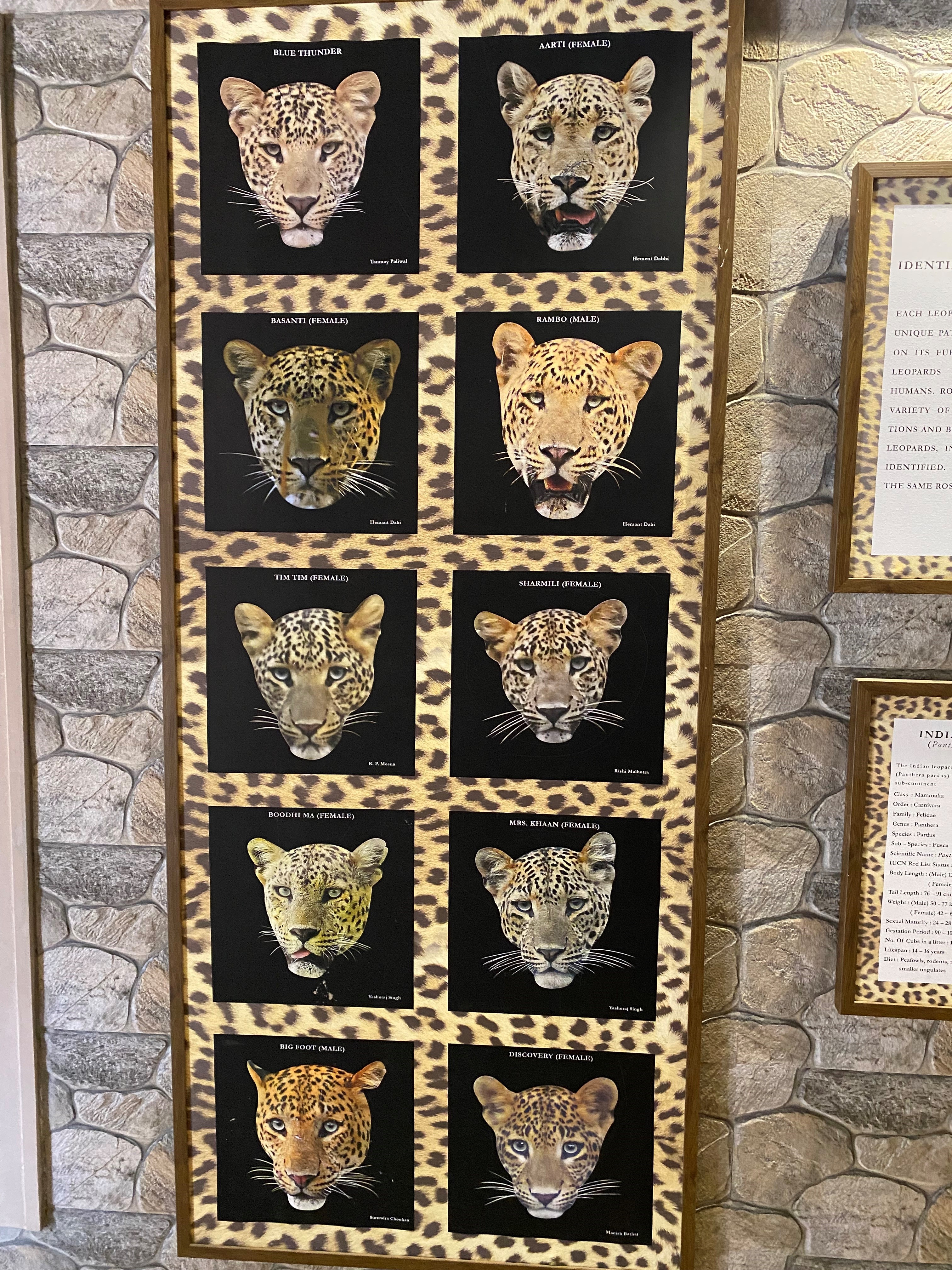
Jeep allotted, we jumped on board the gypsy and our driver-cum-guide assured us of leopard sighting s in the 2-2 1/2 hours safari. We set off into the narrow forest road, and a short distance away was a check-post. The lady official checked our tickets, identity documents and then raised a technical query. A jeep was allowed to carry only 6 +1 driver, we were actually 7+1. We cajoled and pleaded with her, with our driver joining in. She called up her superior on walkie-talkie, who appeared less rigid with rules. We were allowed to move on inside. As we drove inside, we could see houses close to the outer wall of the forest. It was dry all round, with the distant Aravalli mountains, with the mud tracks interspersed with small waterbodies, some of which are man-made, we were told, to beat the searing heat in the area.
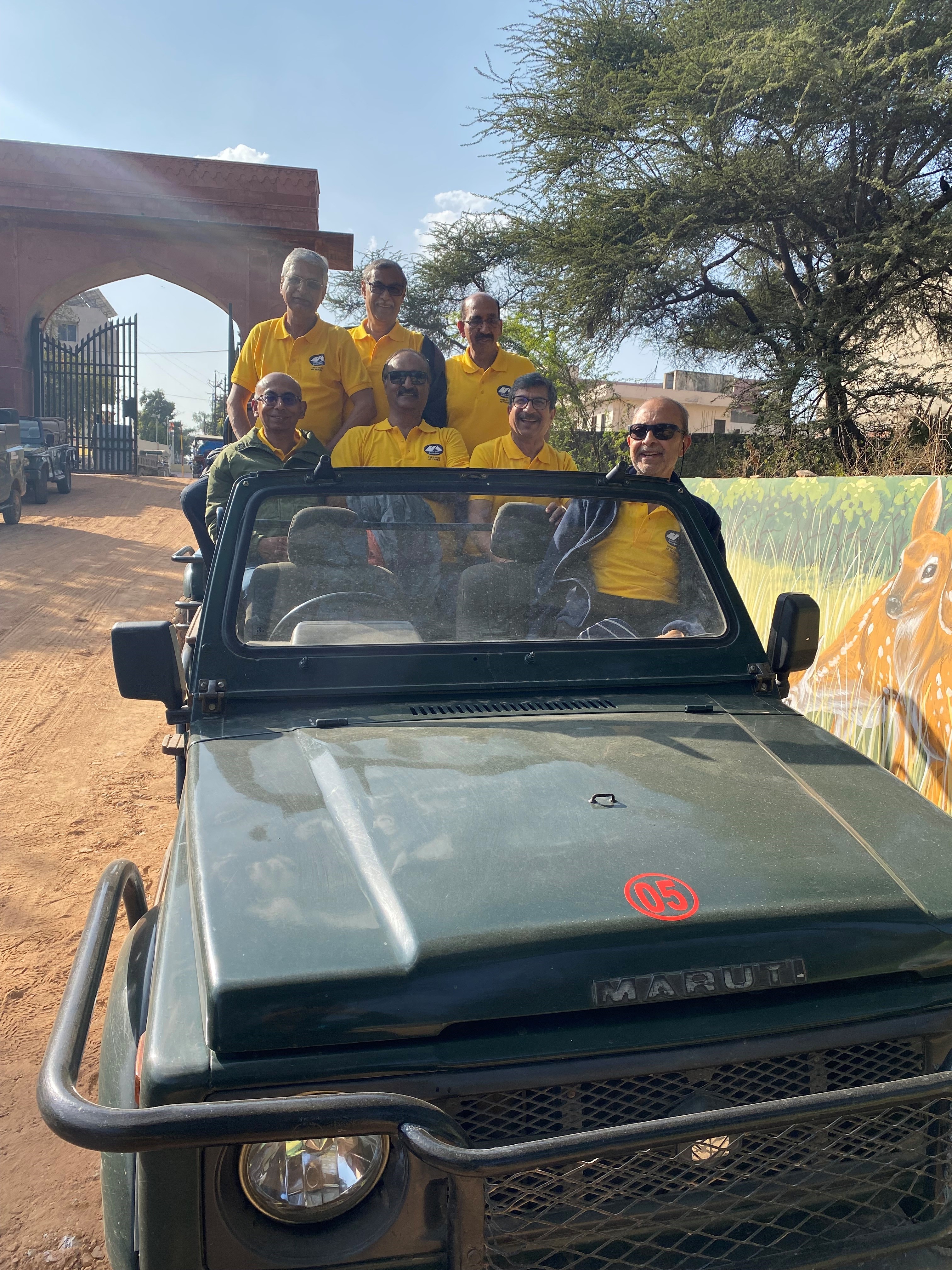
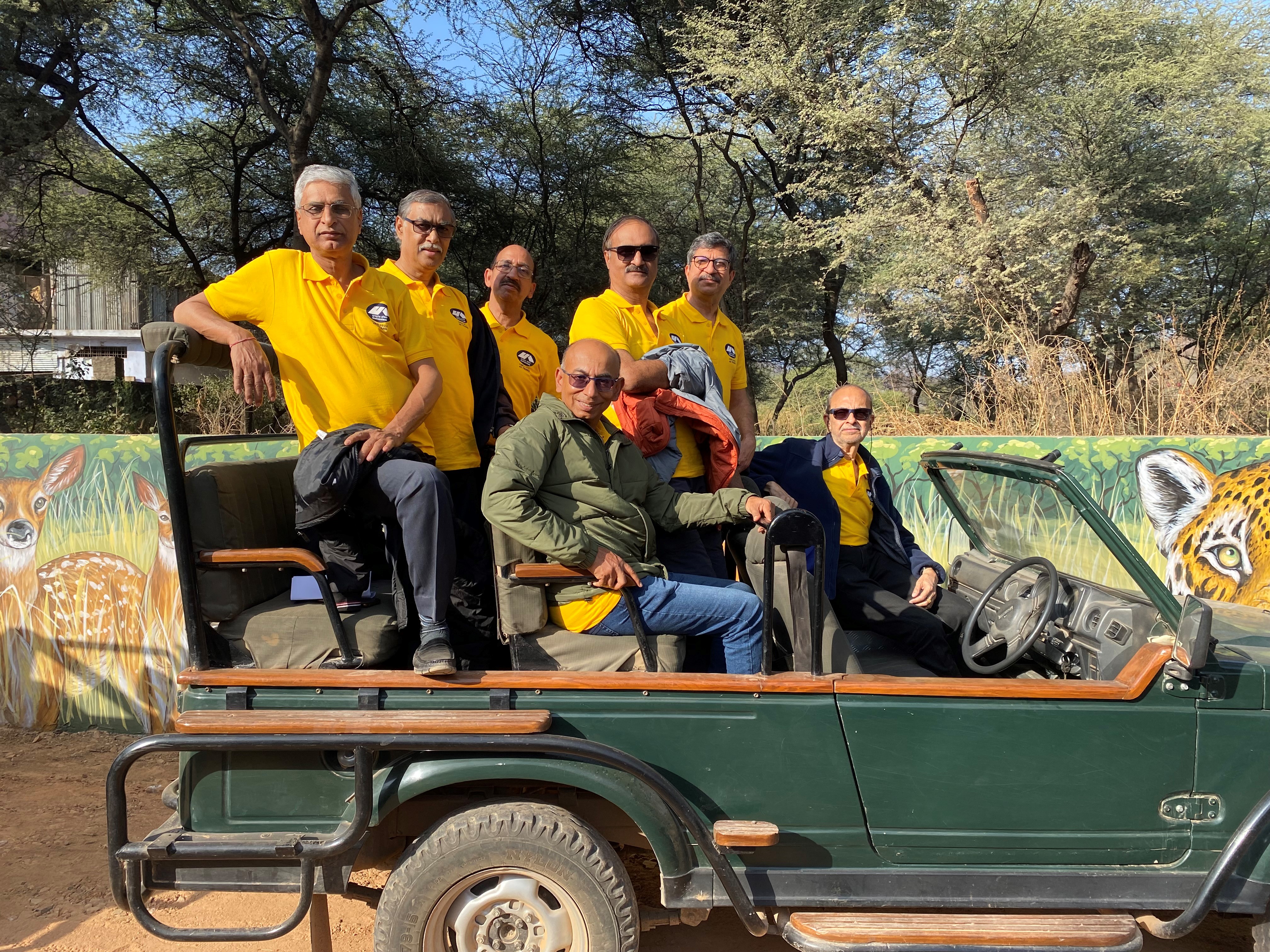
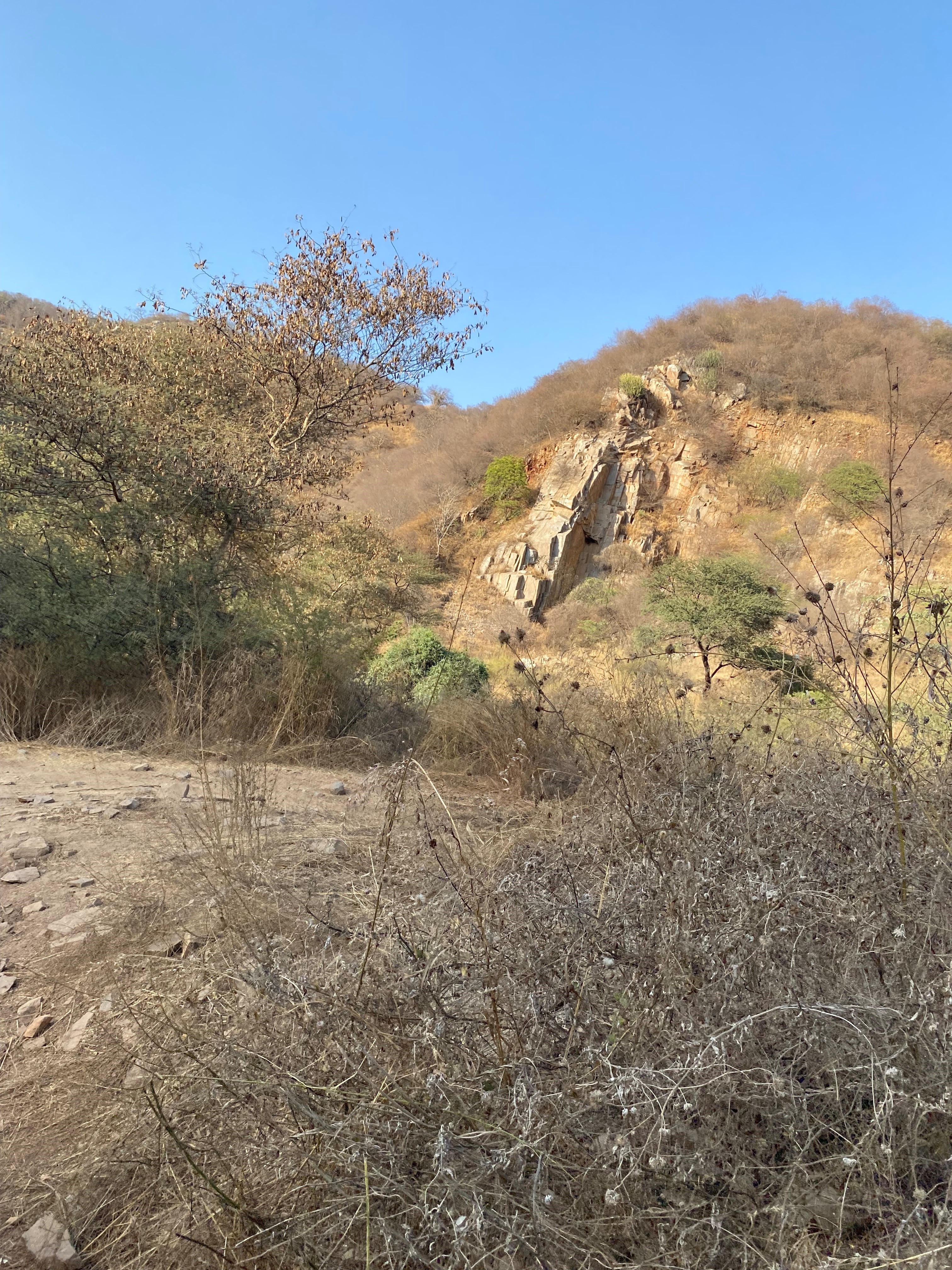
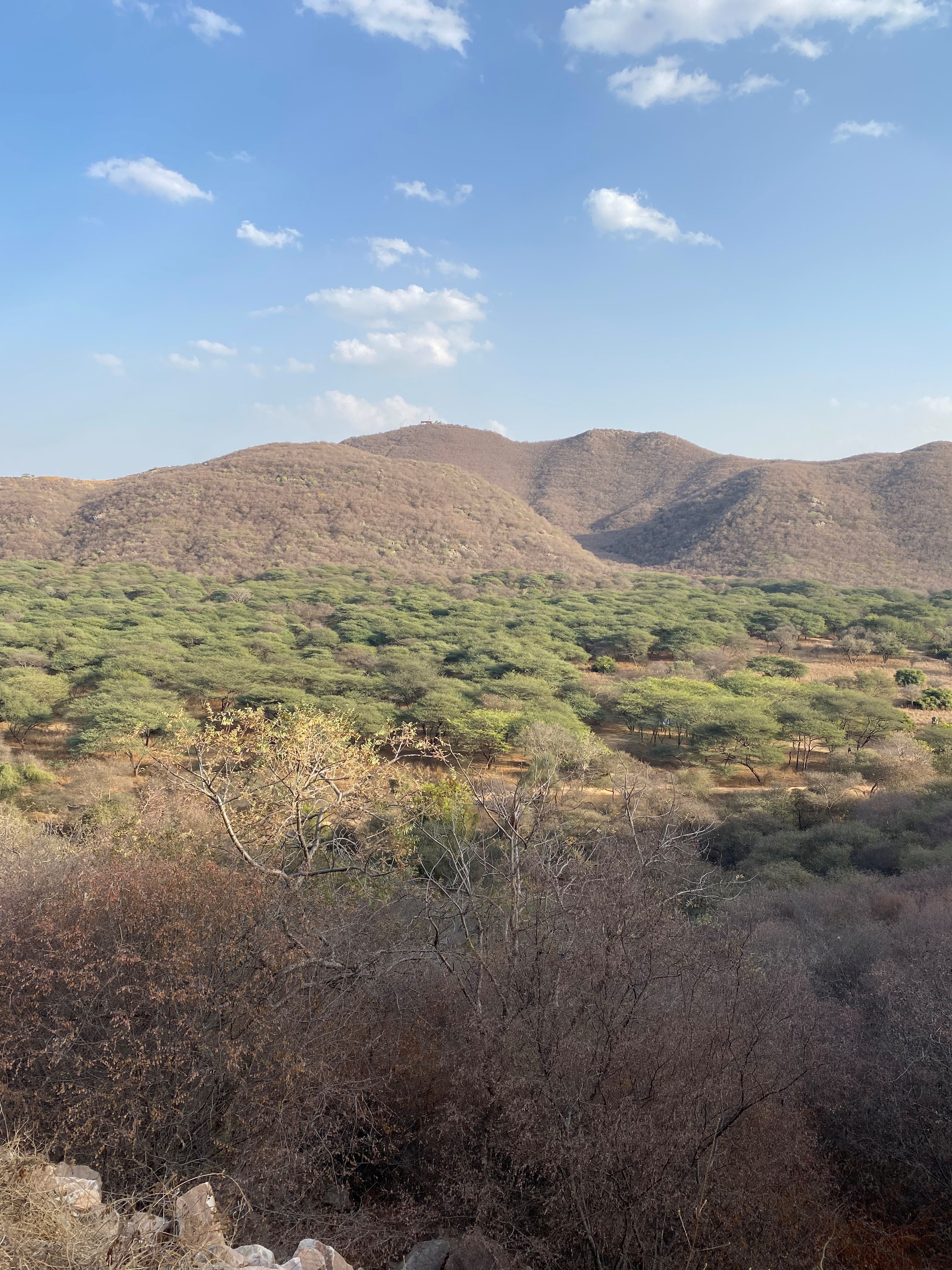
We crisscrossed the dry forest, but the spotted one was not to be spotted. Will we be among the unlucky few, we wondered. Suddenly, there was a flurry of activity. Jeeps were moving in one direction. We too reversed and went to the spot where a number of jeeps were waiting. In the distant hills, said someone. Fingers were pointing towards some spots on the forested hill. There, there, there, shouted my friend – Coming downhill was a cat-like figure. Did we see it or was it imagination? It suddenly vanished. Too distant to figure out if it was leopard and of course, no chance of capturing it on camera. More than an hour had passed and no sighting still. Our driver now raced up a stony, uphill path, where no other jeeps were seen. It was sort of roller-coaster ride, with our backs straining every bit, as we went uphill and then downhill, but the leopards remained hidden. Over two hours now and were circling back towards the exit. We reached the same check-post and the lady official informed of some nearby sighting. We turned back and drove at break-neck speed towards the waterbody that she had mentioned. Many other jeeps too could be seen racing towards the spot. And there —– we saw a huge male leopard, lying near the water, camouflaged so very well with the dry brown bushed/grass. An imposing sight.
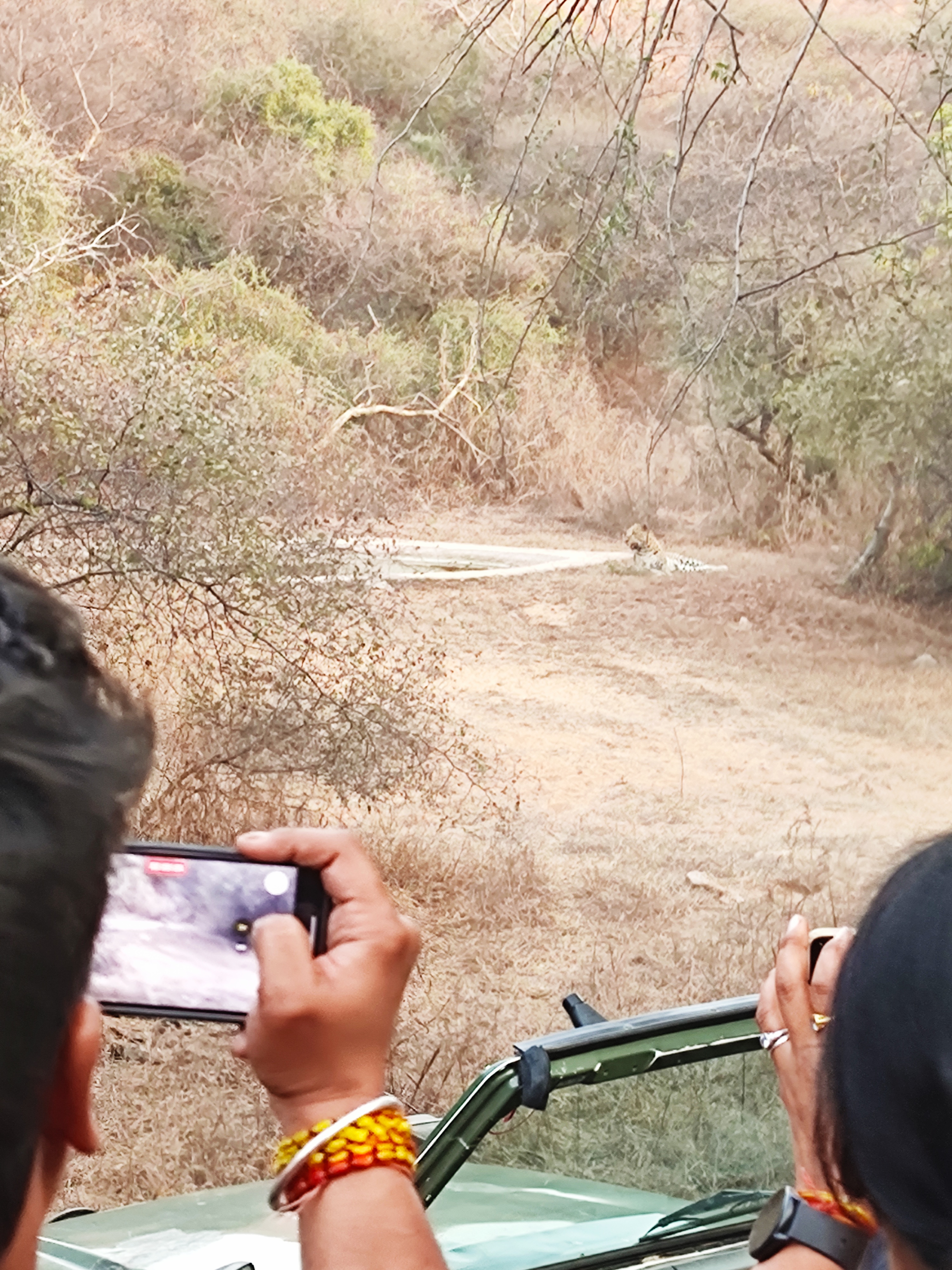
Hold it. There was another one drinking water at a water-hole and now started a cat-walk in front of us, as he moved into the bushes on the other side of the road.
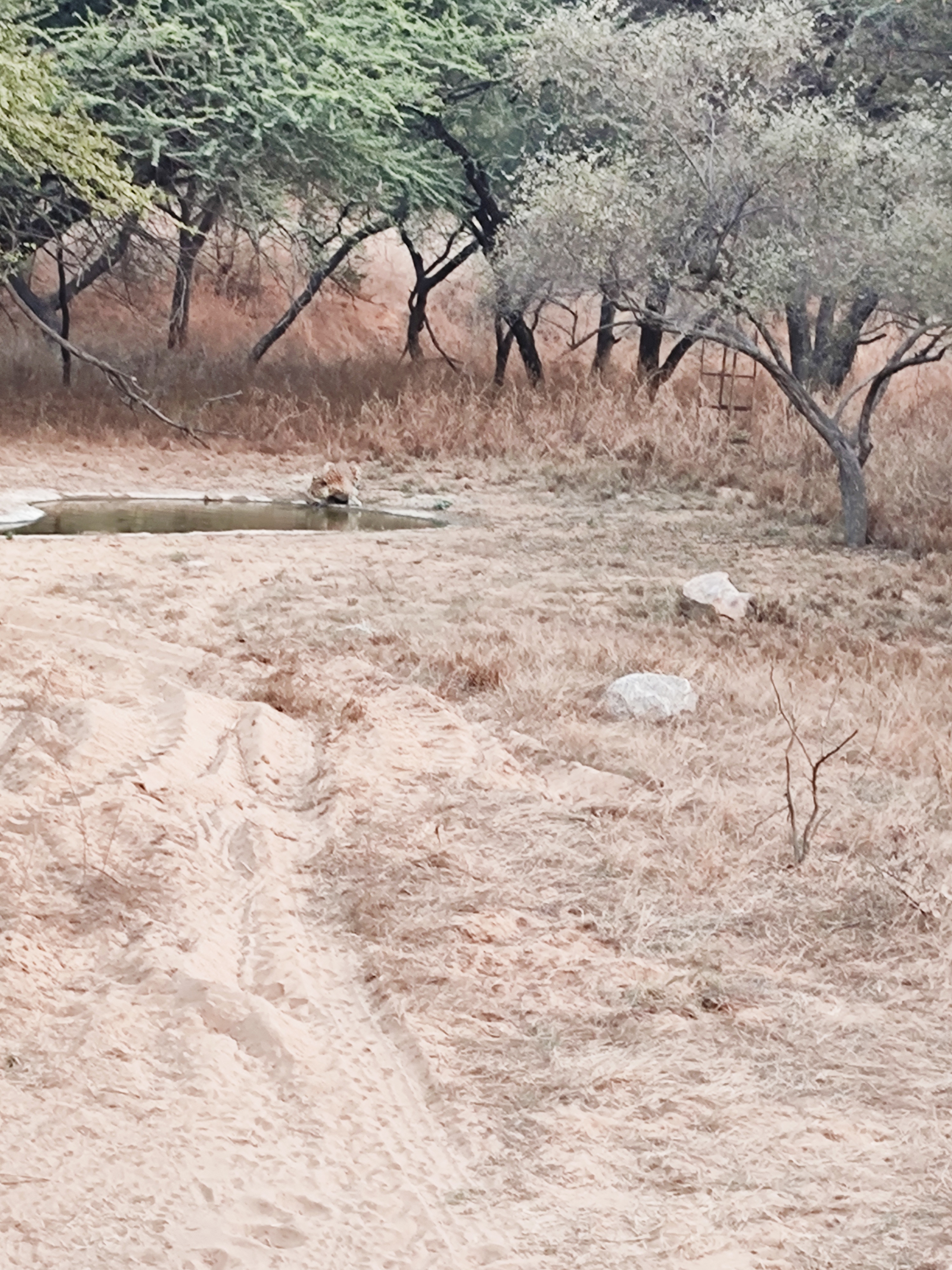
Mission accomplished, we said, as we got off our jeep at the parking lot, thanked and tipped our driver/guide for an enjoyable afternoon adventure. Many locals too are not aware of the Jhalana Leopard Safari. A must-visit place. What I missed sighting in Yala, Sri Lanka, a few weeks earlier, I had seen, closer home at Jhalana.
Discover more from BalasBroadcast
Subscribe to get the latest posts sent to your email.